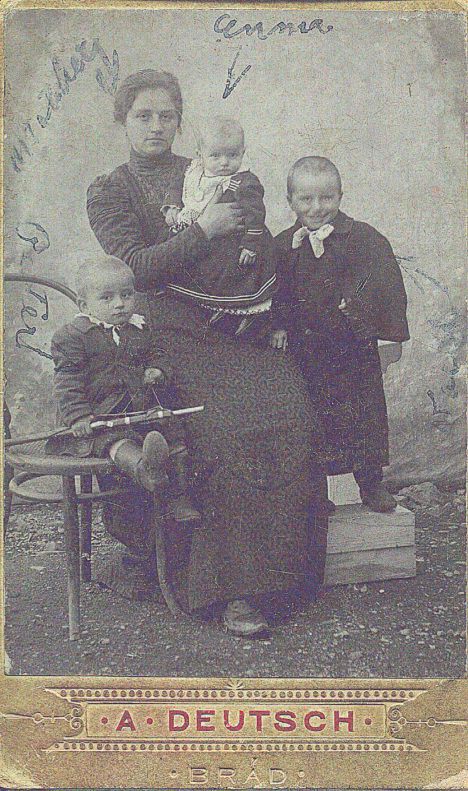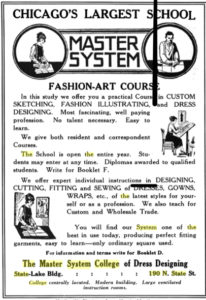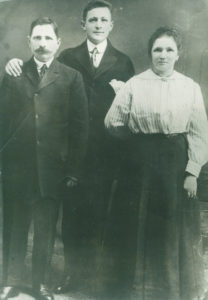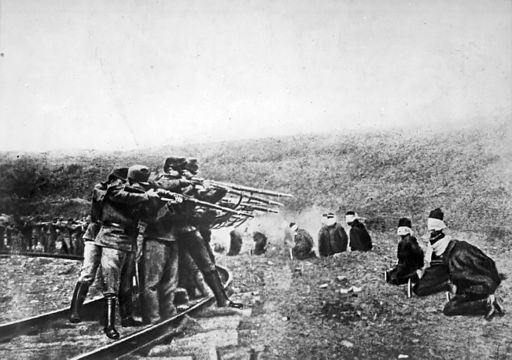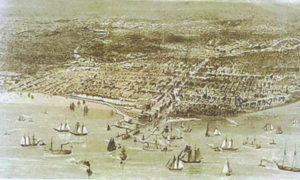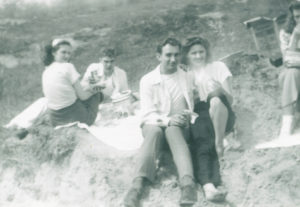By Mary Fairchild
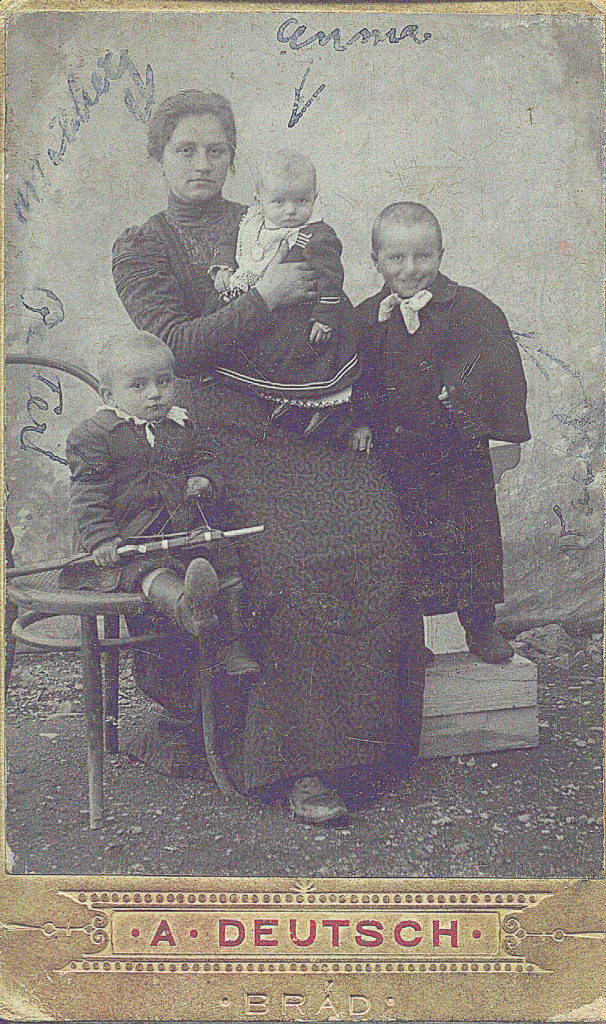
LINK TO MANDULA & TURUC FAMILY PHOTOS HERE
Peter Turuc b 14 July 1875 Romania d 28 March 1939 Gary, IN m. Mary Mandula b. ABT 1880 Romania. They had three children:
- Vasil b. ABT 1900 Romania. Vasil was sponsored by his grandmother, Maria Mandula, and immigrated to Gary, Indiana. He married, changed his name and took a job with the railroad in California.
- Peter Sr. b. 1 July 1902 Romania d. 4 Aug 1956 Chicago, IL. Peter Sr. was sponsored by his grandmother, Maria Mandula, and immigrated to Gary, Indiana; m. 17 July 1923 Elizabeth Schlacter b. 13 June 1901 Kikinda d. 5 May 1977 Mt. Prospect, IL ; They divorced 21 Nov 1942.; they had three children: Peter Jr. b. 13 July 1924 d. 28 Sep 2013, George b. 14 Sept 1925 d. 28 Nov 1970, and Joseph b. 10 July 1934 d. 20 Jan 2018.
- Anna b. ABT 1903 Romania. Anna remained in Romania where she married and had three children.
From 1895 to 1920, the first major wave of Romanian immigrants came to America and settled in the major industrial centers of the East and Midwest. Most of them came from Transylvania and Banat and were looking to save money to return home and purchase land. By 1920, tens of thousands returned home, but for those who stayed, communities were established with extended families and others who had migrated from the same region in Romania. The largest Romanian communities were established in New York, New Jersey, Pennsylvania, Ohio, Illinois, Michigan, and Indiana–many also went to Florida and California. [78]
Although American immigration peaked in 1907, it began to decline between 1914-1918 due to World War I. In the early 1920s, along with recent legislation requiring immigrants over 16 to pass a literacy test, immigration quotas were established. After World War I, Romania stopped immigration for a time when Transylvania, Bukovina, Bessarbia, and other regions under foreign rule officially became part of the country. Also, the ethnic heritages of the Eastern bloc and the Balkan States were strongly linked to their churches, and for communism to be successful it was necessary to break that link. In 1924, the U.S. Immigration Act only allowed 604 immigrants per year from Romania. The lowest immigration of Romanians was during the Great Depression(1929-1939). [78, 56]
From 1760-1900, the Wesleyan revivals in England promoted the Protestant work ethic among the people which gave them a desire to work, save, and give. Because they embraced capitalism, America and England made the greatest advances in the Age of Industry. Capitalism, or the free market system, is where businesses and industries are privately owned and managed without government interference. The “reformation of morals” that came in the wake of the Wesleyan revival led many upper class Englishmen to voluntarily help the poor and needy.
As men rediscovered the Holy Scriptures and opened their minds to truth, they began to advance in the arts and sciences as never before. Modern science began in the 16th century when the ancient books of philosophy were proven false, and the greatest of ancient books, the Bible, was returned to the people and found to be true. Without the Bible, men would never have discovered the foundational truths of which modern science is based. People stopped looking to pagan philosophers and church leaders as they could search for truth themselves in both the Scriptures and nature. Copernicus, Kepler, Galileo, Newton, and other founders of modern science led the way. They learned that God created the universe, that he is separate from the universe, and that he established reasonable, orderly laws which nature obeys. Scientists began to search for the laws that God established so they could understand nature and learn to control it for the good of mankind (Genesis 1:28).
At the turn of the 20th century, the false philosophies of Modernism, Darwinism, and socialism had begun to take root in Europe. Evolution, introduced by Charles Darwin, threatened modern science by denying the role of God as creator and Sustainer of the universe. Darwinism attacks the very foundation of modern science—the source of all scientific laws and principles that make science possible and detours scientists from their true calling of mastering nature for the benefit of mankind. In England, the result was a decline in morality, power, and influence. As people rejected the Word of God and embraced the vain philosophies of men(Col 2:8), the stage was set for the future wars.
Theologians in German universities denied the authority of the Bible, exalting their own reason above God’s Word and teaching that the Bible was a collection of myths and legends with a few historical facts. They denied the basic doctrines of Christianity, including Christ’s deity, man’s sin nature, and the reality of heaven and hell. The cold state churches in Germany were cold and informal and no longer preached the gospel. The Bible was not read and few people had a personal knowledge of God. When the people turned from faith in God, they fell prey to political revolutionaries and ultimately to tyranny. England and America were spared from these anti-Christian influences due to evangelists and Bible teachers and, because they embraced capitalism, both America and England made the greatest advances during the age of industry as well. Capitalism, or the free market system, is where businesses and industries are privately owned and managed without government interference.
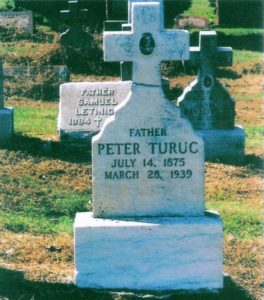
From the early 1900s to 1920, Peter Turuc and his two sons, Peter Sr. and Vasil, emigrated from Brad, Romania to Gary, Indiana. Peter worked in the steel mills of Gary. We have no record of Peter’s wife (Mary Mandula) or his daughter Anna ever immigrating to America. We have several pictures of Mary with a new spouse and Anna married and with her children in Romania at later dates.
Brad, a city in Hunedoara County in the Transylvania region of Romania, was home to the Hunedoara steel works. It was Romania’s steel producing center since 1885. During World War II the steel works of Hunedoara were part of the war effort for the Axis. The Romanian Army lost 700,000 soldiers on the Eastern Front and the Allies, an additional 400,000 soldiers fighting against the Axis. After the Soviet occupation and the subsequent communist regime, industry was favored, and Hunedoara had, for a time, the biggest steel-producing plant in Romania and the Balkans. The city grew larger, and the factories extended so much that they equaled or exceeded the size of the city. The population also increased to over 87,000. [8]
Brad developed around a gold mine that had existed since Roman times. Gold from the area has been found in the Egyptian pyramids, Rome, and the Austro-Hungarian Empire. Today, the largest collection of native gold pieces in Europe, including gold originating from the Metaliferi Mountians, can be found in the Brad Gold Museum. Modern Romania was formed in 1859 through a personal union of the Danubian Principalities of Moldavia and Wallachia. The new state, officially named Romania since 1866, gained independence from the Ottoman Empire in 1877. At the end of World War I, Transylvania, Bukovina and Bessarabia united with the sovereign Kingdom of Romania. During World War II, Romania was an ally of Nazi Germany against the Soviet Union, fighting side by side with the Wehrmacht until 1944, when it joined the Allied powers and faced occupation by the Red Army forces. Romania lost several territories, of which Northern Transylvania was regained after the war. Following the war, Romania became a socialist republic and member of the Warsaw Pact. After the 1989 Revolution, Romania began a transition towards democracy and a capitalist market economy.[72]
The largest medieval castle is in Transylvania: Hunyadi Castle(Corvin Castle) in Hunedoara, Romania. It was designed as a defense fortress and a prison. The towers often held captive war prisoners as well as ordinary criminals. Inside the castle was a bear pit, where prisoners were thrown to be mauled to death by wild animals. The Corvin family had a great impact on Europe. John Hunyadi had stopped the Ottoman Empire from conquering Belgrade and advancing toward Europe. The Corvin family was related to Vlad the Impaler, but this had no relation to novelist Bram Stoker’s imagined Castle Dracula in which he thought of to be situated on an empty top in the Transylvanian Climani Mountains near the former border with Moldavia. [10; 11]
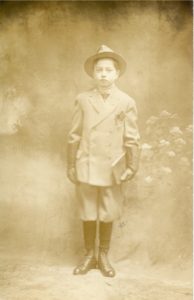
In 1906, the United States Steel Corporation created the city of Gary, Indiana, to support the new works rising on the south shore of Lake Michigan. Gary was dubbed the “City of the Century” as workers looking for high-paying jobs in the massive steelworks of Gary saw Gary as a mecca for employment. [76] The Gary Public Library was completed and opened on November 17, 1912. The south side branch of the Gary Public Library Baily Brancy housed the International Institute in 1922, a social agency to assist Gary’s 50 different nationalities. The Institute encouraged its clientele to celebrate its ethnic heritage.
Before and during World War I(1914-1918), Romanian Americans were known to expose the Hungarian persecution of Transylvania in their newspapers. Many organizations called for the unification of Transylvania and Romania. They were also known to support Romania’s orphans, widows, and refugees. In 1919 Romanian Americans submitted a Four-Point Motion to the Peace Conference, calling for the reestablishment of Romania’s territorial borders, equal rights for ethnic minorities, and the establishment of a democracy based on principles adopted in the United States.[79]
During the 1910s-1920s, the Lake County Times of Gary, which was syndicated, covered everything from scandalous divorce stories to the labor struggles at the steel mills. During the lead-up to America’s entry into World War I in 1917, it joined in the vilification of Germany. The Hammond paper helped stoke up public fears during the 1919 “Red Scare,” which involved a crackdown by U.S. Attorney General A. Mitchell Palmer on anarchists, Communists, and immigrants from Southern and Eastern Europe, whose politics were suspect in the wake of the Russian Revolution and a wave of anarchist bomb plots. Gary, which participated in the great steel strike of 1919 and was home to thousands of Eastern Europeans, was deeply involved in the “Red Scare.”[48]
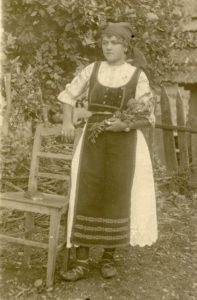
Romanian traditional, or peasant costumes, are made from handwoven linen. Women wear embroidered white blouses and black skirts (or another color, according to region) which cover the knees. The costume is completed with headscarves of various colors (older women usually wear black scarves) arranged according to age and regional traditions.[77]
Peter Sr. arrived after his father and brother had been in America for several years. The family had been sponsored by Peter’s mother-in-law, Maria(Mary) Mondula (Mandula). Maria(Mary) Mandula most likely immigrated to America sometime before 1910. Mary Mandula’s death certificate: b. 3 March 1862 d. 4 Feb 1951; burial 7 Feb 1951 Des Plaines; her address was 1255 W. Harrison St., Chicago. According to great-grandson Peter Jr., Ms Hampu, was also a daughter of Maria Mandula. Maria purchased land for her in Donaldson, Indiana, where Peter Jr worked in the summer as a young boy during the Great Depression.
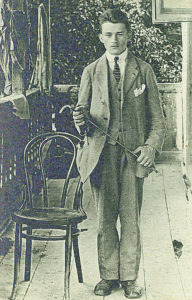
1920–Sept, Peter Turuc Sr. Alien Declaration, Bucharest, Romania.
“I used to spend my summers working on Ms Hamptu’s farm in Donaldson (Donelson), Indiana. It was hard work. Maria Mandula bought the farm for her daughter and her husband John Hampu. The mailing address was Plymouth, Indiana.” Grandson, Peter Turuc Jr.
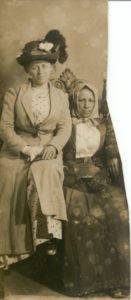
The Plymouth Downtown Historic District was listed on the National Register of Historic Places in 1998. Around 1895, Plymouth had no electricity, water, or inside toilets and everyone had to come to town to get their mail at the post office. About five years later, around 1900, electricity came and the town began to modernize. At this time, a movie theater in town played silent movies as someone played a piano. In 1913 most homes finally had electricity and gas for cooking, and by 1917 you could get your first car for about $300. By 1925, the population was near 5,000. Plymouth prospered following the end of World War I and numerous small factories.
A streetcar was the vital mode of travel between 1908-1947, and one operated for the Gary & Interurban Railroad. The route included Fourth and Broadway to 45th Avenue and back, then to Valparaiso, returning to Gary via the Flint Lake area. They also serviced the Hammond and East Chicago areas. Hammond became a shopping mecca for northwest Indiana in which the plot of A Christmas Story revolves around — where the line to see a drunken Santa Claus and some evil elves “stretched all the way back to Terre Haute.”
“Indianapolis may have had the busiest interurban terminal in the world early in the 20th century but Chicago laid claim to the busiest corner in the world at State and Madison streets…Through reorganizations and acquisitions it grew from just over three miles of coverage in the beginning to nearly 70 miles of routes as the Chicago, Lake Shore and South Bend Railway, a decade and a half later. Eventually, encircled by its transportation lines were East Chicago, Indiana Harbor, Gary, Michigan City and Hammond.” Robert Reed [70]
“Because Maria spoke many languages she did very well financially. While she was supervisor for Bunte Brothers Candy Co., she got Pete Sr. a job there.” Peter Turuc Jr.
By the 1910s, when Bunte Bros. did annual sales of about $2.4 million, the company employed about 1,200 people. [75] In 1919, half of the 400,000 wage earners in Chicago worked in heavy industries, including iron and steel, garment manufacturing, agricultural and electrical machinery manufacturing, commercial printing, railroading, and meat packing. Immigrants were drawn to the the area as the breakfast sausages, harvesting equipment, lanterns, and steel rails produced in Chicago-area factories reached international markets.
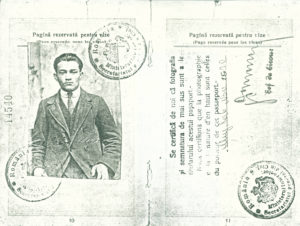
1920–06 Nov Romania Passport; Passport.
When Peter Sr. began cabinet making at Emil J. Paider Co. in Chicago he met his future wife, Elizabeth Schlacter. He made barber and beauty shop cabinetry fixtures.
Just prior to Peter Turuc Sr’s immigration, the Soviets promised to invade Romania and link up with Hungarian Communist revolutionary Béla Kun and were on the verge of doing so, but military reversals suffered by the Red Army in Ukraine halted the invasion of Romania before it began. Around this time, the Romanians invaded Hungary and overthrew the Hungarian Soviet Republic Kun had been the de facto leader of . On 1 August 1919 a government of Social Democrats ruled the country, after, on 4 August, the Romanian army took Budapest. [54]
Tens and thousands of Russians immigrated to America fleeing their civil war which led to the formation of the Soviet Union–the first communist country. The war had been going badly for Russia and the economy plummeted; crops failed; millions faced starvation. As conditions grew worse, the Bolsheviks, a group of communist revolutionaries, began to win new followers. The Germans supported the Bolsheviks and began to smuggle exiled communist leaders, including Nikolai Lenin, back into Russia. Through Communist propaganda and terrorism, Lenin soon emerged as leader of the first Communist state in history. Because human life had no value; anyone who posed even the slightest threat to the Communist regime was killed; “enemies of the state where imprisoned or executed.” Lenin also controlled the future generations by methodically drilling Communist principles into the heads of students. Children were taken out of their homes at an early age and trained. The Communist goal was to make people believe that they were supposed to completely submerge themselves in the Communist state. In 1919 Lenin organized the Third International, a terrorist organization dedicated to spreading Communist revolution world-wide to establish a world-wide Communist state. [31]
In the Russian Civil War in 1918, Kun fought for the Bolsheviks. During this time, he first started to make detailed plans for a communist revolution in Hungary. In November 1918, with at least several hundred other Hungarian Communists and with a large sum of money provided by the Soviets, he returned to Hungary. The Hungarian Soviet Republic, the second Communist government in Europe after Russia itself, was established on 21 March 1919. [52]
Béla Kun’s government lasted less than four months. During this period, heightened political tension and suppression led to arrests and executions in what came to be known as the Red Terror. This led to a lowering in support of the government. Hungary attempted to retain Slovakia and Transylvania, but Romanian troops invaded Hungary, eventually reaching Budapest in August 1919. Upon the invasion, most Hungarian communists, including Kun, went in exile.[29]
In Transylvania and in other regions under Romanian occupation, the fear of socialist uprisings and troubles was strengthened by military reports, according to which many Hungarian agents were invading Transylvania in order to organize the resistance and support Bela Kun’s regime. The former division of Szeklers, for example, after being disarmed, interned and then liberated, immediately started to make an active propaganda among the Transylvanian Magyars to provoke strikes and riots against Romanian troops and authorities.
Following the fall of the Hungarian revolution, Kun emigrated to the Soviet Union, where he worked as a functionary in the Communist International bureaucracy as the head of the Crimean Revolutionary Committee from 1920. He was an organizer and an active participant of the Red Terror in Crimea, a period of political repression and mass killings carried out by Bolsheviks after the beginning of the Russian Civil War in 1918 (1920-1921). [50]
Prior to the Bolsheviks, and while Russia was involved in World War I, Tzar Nicholas II was forced to abdicate after the first of two 1917 Russian revolutions were supported by Russian Army forces. The Tzar was replaced by a provisional government under Prince Georgy Lvov, which was an alliance of liberals and socialists desirous of political reform. Ruling alongside the democratically-elected executive and constituent assembly was the Petrograd Soviet under an arrangement called Dual Power. The Bolshevik Revolution followed in October, 1917, bringing changes in Russia’s social structure and setting the stage for the creation of the Soviet Union. The barbarous Bolsheviks assassinated Nicholas and murdered his family to ensure that the Romanov line of succession would never present an opportunity for revival of the Tzarist regime.
The atheistic philosophy of Marxism would provide the philosophical underpinnings of communism. This gave a strong police state and military that would crush biblical faith throughout Russia. The future Union of Soviet Socialist Republics would spread throughout Eastern Europe and influence large parts of Asia including China, Korea, and Vietnam. The Soviet objective was to destroy all churches throughout Russia and the territories it conquered. The ethnic heritages of the Eastern bloc and the Balkan States were strongly linked to their churches, and for communism to be successful it was necessary to break that link.[66]
The basic principles of communism were articulated in the mid-1800s by Karl Marx and Friedrich Engels, two German economic and political philosophers. The ultimate weakness of Soviet Communism can be traced to many sources. Despite their ideological commitment to human equality, the Communists established a party elite in the Soviet Union, leaders who were, as George Orwell commented in his allegorical fable Animal Farm, “more equal than others.” As an economic system Communism also was found lacking. Allowing little scope for human initiative, Communists failed to draw out the best efforts of the Soviet peoples as producers and distributors of goods. Communism relied on “controlled press” that printed only what the government wanted the people to hear. Romania even required its citizens to register their typewriters. [37]
Romania was the richest land in Europe in 1913 during WWI…it had the most agricultural developments, vineyards and woodlands. It had the largest oil reserves and the best fishing grounds on the continent. What happened 100 years later? In 2013 Romania is second poorest nation in Europe, run by thugs and thieves, the second generation of communists left over by Dear Leader’s regime…Communism does not produce, it consumes and destroys… Aurel Emilian Mircea, Romanian Diaspora
Ion Mihai Pacepa, a former three-star general in Communist Romania, who defected to the United States in July 1978 following President Jimmy Carter’s approval of his request for political asylum, reminds us that it was Marxist doctrine that killed some 94 million people and transformed a third of the world into feudal societies in the middle of the 20th century. Pacepa is a columnist for the Internet conservative blog site PJ Media. He also writes articles for The Wall Street Journal and various American conservative publications, such as National Review Online, The Washington Times, the online newspaper FrontPage Magazine and the World Net Daily.
During his years at the top of Marxist Romania, he describes Marxism as a cancer which works so silently that you will only detect it when it is too late. At Stalin’s request, all East European countries “liberated” by the Red Army at the end of World War II began their march toward Marx’s communism in the guise of socialism. Just a few months after the Red Army “liberated” the Kingdom of Romania, Stalin merged that country’s Communist Party with the Social Democratic Party, producing the Workers’ Party.
For East Germany, overnight, the old Communist Party was renamed the Socialist Unity Party of Germany. The Hungarian Communist Party, which had created the short-lived Hungarian Soviet Republic in 1919, became the Hungarian Working People’s Party. Most East European governments similarly concealed their road to communism with new names like the People’s Republic or Popular Republic.
The U.S. Congress, dominated by President Carter’s Democratic Party, brought the United States a sui-generis version of Ceausescu’s economic determinism. That move generated double-digit inflation. The U.S. prime rate hit 21.5%, the highest in U.S. history, and people had to spend long hours in line waiting to buy gas for their cars.
Although Pacepa is grateful to President Carter for signing off on his political asylum, he tells us that we need to know that it was Carter who actually laid the groundwork for the Democratic Party’s disastrous flirtation with the undercover Marxism that has now gained a stronghold over the party.
Laura D’Andrea Tyson, former chairman of the Council of Economic Advisors under President Clinton and later an economic adviser to President Obama, has kept that undercover Marxism alive in the U.S. She even wrote her Ph.D. dissertation on the merits of the allegedly “mixed” socialist-capitalist economies in Ceausescu’s Romania and Tito’s Yugoslavia. Two American presidents went to Bucharest to pay tribute to Ceausescu’s economic determinism — none had ever gone there before.
When economic determinism lost credibility after the devastating economic crisis in Greece, our Democratic Party began replacing it with “progressivism,” which has became the latest cover name for Marxism. The Progressive movement was born after the U.S. financial crisis of 1893, which it tried to solve by redistributing America’s wealth. The progressives pushed through the first federal income taxation, and they created a string of labor standards that opened up the floodgates of corruption and financial excess that generated the Great Depression. A new progressive movement, dubbed the New Deal, produced steep top tax rates, strict financial regulations, Social Security, Medicare, and Medicaid, eventually generating the current economic crisis.
Economic determinism is a theory of survival rooted in Marx’s Manifesto (another theory of survival), but it pretends that the economic organization of a society, not the socialist class war and the socialist redistribution of wealth, determines the nature of all other aspects of its life. Over the years, economic determinism has assumed different names. Khrushchev’s dogonyat i peregonyat (catching up with and overtaking the West in ten years) and Gorbachev’s perestroika are the best known.
The United States of America was founded upon certain biblical principals that recognized the unalienable right to life, liberty and the pursuit of happiness as God-given rather than bestowed by government. Without the biblical ethic as the foundation for any nation’s freedom, the people are quickly relegated to poverty and injustice, and the freedom they sought evaporates quickly.
Charles Darwin’s 1859 Origin of Species became the foundation for the theory of the evolution of man from lower life forms. To this day, this “unproven” theory is presented matter-of-factly from preschool to university in America, as well as mass media. With evolutionary thinking, progress soon became synonymous with the passage of time and students were segregated by age. Students were now judged to be either “ahead” or “behind” their peer group. The one-room school house had been the norm since there was no impetus to segregate based on maturity level. At the turn of the twentieth century, Granville Stanly Hall used the social applications of Darwin’s work in biology and suggested that individuals evolve through the same stages through which human history has evolved. Infants and toddlers were associated with pre-savage periods of human history; he counseled parents and teachers to leave their young children to Nature and encourage play which fosters motor development. Likened to the early pygmies and other savages, a crisis period of transition led to the pre-adolescent years of 8-12; these children could be drilled and disciplined in school. Then another period of crisis came at adolescence, which he deemed the most critical period in one’s life. In his greatest work, Hall developed this theory in which he called his “recapitulation theory” in a two-volume tome titled “Adolescence: its Psychology, and its Relations to Physiology, Anthropology, Sociology, Sex, Crime, Religion and Education.
Rebellion was actually viewed as a positive thing as Hall taught that each generation is or should be superior to the previous one, and therefore needs to break free from those which precede it. Hall’s renowned follower, John Dewey, later applied these theories to the public school system. Dewey taught a generation of teachers and school administrators through his laboratory school for progressive education at the University of Chicago. He created high schools to segregate teens from other children and from adults. Within a generation after Dewey, an adolescent sub-culture imerged. By the 1950s, teens had their own music, language, and dress. The fifties’ James Dean’s movie “Rebel Without a Cause” contained the theme that the nobility of youth suffers at the hands of an evil older generation which lacks understanding. Elvis Presley would soon promote certain hair styles, dress, and attitudes that became legendary. Then, Dustin Hoffman would deal the final blow at parental authority and respect in movie “The Graduate.” Today the youth culture is the “dominant culture.” [43]
The atheistic philosophy of Marxism provided the philosophical underpinnings of communism. This gave a strong police state and military that would crush biblical faith through out Russia. The future union of Soviet Socialist Republics would spread throughout Eastern Europe and influence large parts of Asia including China, Korea, and Vietnam. The Soviet objective was to destroy all churches throughout Russia and the territories it conquered. The basic principles of communism were articulated in the mid-1800s by Karl Marx and Friedrich Engels, two German economic and political philosophers. The ultimate weakness of Soviet Communism can be traced to many sources. Despite their ideological commitment to human equality, the Communists established a party elite in the Soviet Union, leaders who were, as George Orwell commented in his allegorical fable Animal Farm, “more equal than others.” As an economic system, Communism was also found lacking—allowing little scope for human initiative, the Communists failed to draw out the best efforts of the Soviet peoples as producers and distributors of goods. Communism relied on “controlled press” that printed only what the government wanted the people to hear. Romania even required its citizens to register their typewriters.
![Vasil and Pete Turuc Sr. and Elizabeth[Schlacter] Turuc holding son Peter Jr..](https://www.mfairlady.com/wp-content/uploads/2018/01/BabyPeteVasilandparents-219x300.jpg)
Peter Turuc Sr. b . 1 July 1902 Romania d. 4 Aug 1956 Chicago, IL m. 7 July 1923 Chicago, IL Elizabeth Schlacter b. 13 June 1901 Kikinda d. 5 May 1977. Marriage certificate here. They divorced 21 Nov 1942. They had three children (1940 Census):
- Peter Jr. b. 13 July 1924 Chicago, IL d. 28 Sep 2013 Scottsdale, AZ m. 27 Nov 1948 Dolores Schimel b.1 Sep 1927 Chicago, IL d. 28 Sep 2014 Scottsdale, AZ.
- George b. 14 Sep 1925 Chicago, IL d. 28 Nov 1970 m. Francis. They divorced. They had one child. George m. Dolores.
- Joseph b.10 July 1934 Chicago, IL d. 20 Jan 2018 Bourbonnais, IL m. Joan Koful. They divorced.
The family lived at 2048 Seminary Ave. in Chicago during the Great Depression. Later, Peter Sr. lived at 901 W. Roosevelt for 36 years, not far from his grandmother, Maria Mandula, who would pass away in 1951. Peter Sr. died at the age of 54 in 1956. He was cremated: 7 August 1956. On 17 August 1956 his ashes were strewn beneath the chapel pines of Chicago’s Graceland Cemetery, 4001 N. Clark St., Chicago, IL 60613.
During the “Roaring Twenties,” in many nation’s big cities, the younger generations opened themselves up to whatever became popular—and entertainment told them what they must do to be popular themselves. Women were encouraged to no longer look like their mothers and grandmothers—they began to wear short skirts and bobbed hair like the flappers and began drinking, smoking, and engaging in sexual license. Although this was not the norm, it was promoted in movies and magazines.
The 1920s were filled with indulgence and decadence as secular humanism and social Darwinism had already made great inroads into Western Civilization. On August 18, 1920, the 19th Amendment to the U.S. Constitution granted American women the right to vote. Many doors were open for women to leave their homes and women began to assert themselves in every area of society. Birth-control devices allowed women to concentrate on earning money instead of raising children and technology provided new appliances which gave more free time to women who did keep their homes. As more women took the roles of men, many men began to shrink from the position of heads of their families and churches. When God ordained hierarchy of man being the head it was ordained without sin. It had worked perfectly in love, but sin soon polluted it. Because of sin, women have been mistreated through the centuries. The battle of the sexes began in the garden when Eve took the forbidden fruit. There is still a hierarchy of headship in the church and the family, but when done in the love of Christ it is not abusive.
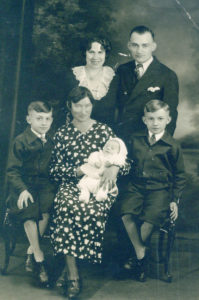
The indulgence of the roaring twenties would only help drive the country into its darkest decade. Soon more goods were being produced than Americans could afford to buy. Everything seemed to be going pretty good until December–when the banks just closed. The steel mills were operating at between 10 and 15 percent capacity, and, in Hammond, the huge Pulman-Standard plant closed for ten years.
Masters System College, 190 N. State Street, Chicago.
April 9, 1928, Elizabeth (Schlacter) Turuc received her diploma in Ladies Garment Design from the Master System College, 190 N. State Street in Chicago. She was almost 27 and had been in Chicago for 7 years, married for 5 years, and had two sons, Peter Jr.–4 years old and George–three years old. Later, she became a seamstress for a satin clothing company in Chicago called Scintilla, Inc., 4802 N. Broadway, Chicago, and several of the grandchildren still recall receiving satin sheets and pajamas she had made for them.

January 11, 1929, Peter Turuc Sr. is 26 years old and is naturalized.
On “Black Tuesday,” over 16 million shares were dumped for whatever they could bring, causing the stock market to crash and ushering The Great Depression. It spread from the United States to the rest of the world, lasting from the end of 1929 until the early 1940s. More than 15 million Americans became unemployed. President Herbert Hoover, a strong believer in rugged individualism, did not think the federal government should offer relief. Focusing on a trickle-down economic program to help finance businesses and banks, Hoover met with resistance from the business executives who preferred to lay off workers. Most Americans were able to provide for themselves, and others received help from family, friends, and private charities. Certain leaders, however, began to convince people that the government should solve their financial problems. As the government interfered with the American economy, many people began to depend on it for their financial needs. By 1932, the Depression was at its worst, and many people were open to socialistic ideas of government control and economic planning. [25]
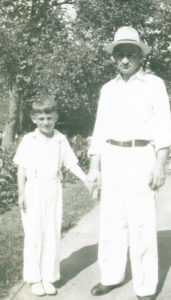
Many families lined up in soup lines for meals and some had to seek shelter in settlement houses. Other people committed suicide–the Depression was one of the hardest points in America’s history. In the Calumet Region, farming provided most of the jobs–many farming out of necessity. Farm laborers worked from daybreak until sunset and many farmed because they knew of nothing else. Then, as transportation became more accessible and efficient, the number of people pursuing agricultural jobs declined.
“It was terrible, so hopeless. You couldn’t find a job. It was so frustrating. You didn’t know what you’d be doing next week, next month, next year or tomorrow. There was just no planning at all.” Maurice O’Hern, a teen-ager in Hammond during the onset of the Depression. [73]
When Franklin D. Roosevelt took the oath of office the Great Depression had reached its lowest depths. In the proposals that FDR made to congress, he followed the advice of a group of close advisers, mostly college professors, who came to be known as the “Brain Trust.” They urged the adoption of untried and unproven economic theories of John Maynard Keynes. Keynes was a British left-wing economic theoretician who advocated central planning and massive economic and social intervention on the part of government in order to bring a nation out of economic recession or depression. Keynesian economics and New Deal legislation were aimed at “priming the pump” and “spending the nation into prosperity.”
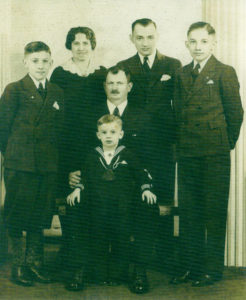
Eli Kotol, pictured above center, was most likely a cousin of Maria Mandula who was also sponsored by her. Eli married Martha and had no children. They lived in Omaha, Nebraska.
John Sirca, Don Dionese, and Kiva Sirca, sister of Eli Kotol; probably a cousin of Maria Mandula.
John Sirca and Eli Kotol both got jobs with the railroad. Eli and John worked in Nebraska where the railroad dead ended at that time. Kiva married John Sirca and had a son, Don Dionese, who became a doctor. He did his internship at Cook County Hospital. He married and then entered WWII as a military doctor. He re-married and had two kids and they moved to California.
Many Eastern European immigrants arrived in the United States to improve their economic circumstances and to send money back to their families, but many also were escaping oppression, violence, or political upheaval. Between 1820 and 1920, somewhere between 3.7 and 5 million people emigrated from the Austro-Hungarian Empire to the United States in the turmoil of the last century of the Habsburg rule which had originated in 1282. When the Austrian Empire became the Dual Monarchy of Austria-Hungary in 1867, it included the present-day countries of Austria, Hungary, Slovakia, and the Czech Republic, as well as parts of present-day Poland, Romania, Italy, Slovenia, Croatia, Bosnia and Herzegovina, and Serbia and Montenegro. With at least fifteen languages, a wide range of social, economic, and cultural systems, it’s diverse population included Poles, Croats, Bosnians, Serbians, Italians, Czechs, Ruthenes, Slovenes, Slovaks, Romanians, and several million Germans and Hungarians.[60]
The Habsburg Monarchy, also known at various times as the Austrian Empire and Austria-Hungary, was a complex state organized along lines very different from those of a modern nation-state. The three operating principles were the dynasty, class, and reform.
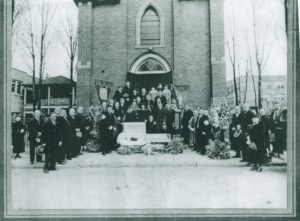
Just one year before Peter Turuc’s death, Romanian political agitator, founder and leader of the country’s principal fascist movement, the Iron Guard, Corneliu Codreanu, died near Bucharest (b. 13 Sept. 1899 d. 30 Nov 1938). Early exposed to anti-Semitism, Codreanu participated widely in anticommunist and anti-Semitic activities during his university years (1919–22). In 1922 he helped found the Association of Christian Students, which, from 1923 to 1927, he affiliated with the League of National Christian Defense (LANC), headed by the anti-Semitic university professor A.C. Cuza.
In 1923 Codreanu was arrested and imprisoned for threatening to kill “traitors”; arrested again on a murder charge in 1925, he was acquitted. In 1927 he broke with LANC to form his Legion of the Archangel Michael, which later called itself the Legion or Legionary Movement. He also established a military wing within this group called the Iron Guard (1930), the name which outsiders would eventually apply to the movement at large. Despite official persecution and its own terror tactics, the Guard—now renamed the All for the Fatherland Party—had by 1937 become the third largest party in the state; but its electoral successes moved the dictatorial king Carol II to dissolve it (January 1938) and imprison Codreanu (April 1938). On Nov. 30, 1938, while in transit between prisons, he and 13 of his associates were first garroted and then shot, supposedly while trying to escape. [69]
By the end of the 1930s, Romania’s Legion of the Archangel Michael (Iron Guard) became proportionately the third-largest fascist movement in Europe. Unlike Germany or Hungary, Romania was one of the main beneficiaries of World War I, which doubled the size of the country. Yet this enormous expansion—together with Romania’s severe social, economic, and cultural backwardness—posed problems of the utmost severity. The country was faced with the challenge of building a greatly expanded and multiethnic nation, creating a democratic political system, and modernizing one of the weakest economies in Eastern Europe.
The term “fascism” was adopted in Italy during the 1920s by followers of Benito Mussolini. Later it was applied to Adolf Hitler of Germany. This political doctrine glorifies the state at the expense of the individual. It embraces and authoritarian leader, who embodies the state, and often involves racist ideologies, exalting one group at the expense of another. Unlike communism, under which all property is owned by the state, fascism encourages industrial and financial magnates. Like communism, it oversees individual and business activity, employing secret police to insure compliance with the state.
In 1922, Mussolini came to power with the help of a private army of thugs who beat up rival political candidates. Fascism only appeal was it ability to provide order. Adolf Hitler won a following with a similar promise. He charged that the unpatriotic leaders had sold out his country at the Versailles conference. Germany had surrendered to the Allies in WWI while German troops still occupied France.
The Nazi Party was founded in 1919. In 1923 Hitler tried to seize the Bavarian state government. After his revolt failed, he decided to gain power by lawful means by attracting voters by promising to make German people prosperous, to ignore the Treaty of Versailles, and to rebuild Germany’s armed forces. By 1933 Hindenburg appointed Hitler chancellor and he soon overthrew the constitution and began to create a dictatorship. He permitted only one political party—the Nazi Party. Hitler and Mussolini supported another dictator, Francisco Franco, in the Spanish Civil War of the 1930s. They were also attracted to Japan, an authoritarian power, then in the process of occupying China.
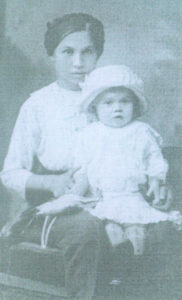
1921—30 August, Immigrant Inspection Card, Elizabeth Schlacter, Trieste departure.
1921—2 September, Elisobet Schlacheer, 18 yrs., Argentina ship to New York.
Peter Turuc Sr.’s wife, Elizabeth Schlacter, emigrated from Yugoslavia in 1921 with her brother Max. Her baptismal certificate was from Magno Kikinda. Kikinda is about 154 miles west of Brad, Hunedoara, Romania, homeland of Peter Turuc and his family. Brad and Kikinda are in the Banat geographical and historical region in Central Europe. Today, the Banat is divided among three countries and is populated by ethnic Romanians, Serbs, Hungarians, Germans, Krashovani, Ukrainians, Slovaks, Bulgarians, Czechs, Croats, Jews, Romani and other ethnicities. [21]
Beginning in 1600, the Ottoman Turks attacked Central Europe and occupied large areas there in the Middle East and North Africa. The Banat was an Ottoman province from 1552 to 1718, when it became part of Habsburg Austria. During the Ottoman rule, parts of Banat had a low population density due to years of warfare, and some local residents also lost their lives during Habsburg-Ottoman wars and Prince Eugene of Savoy’s conquest. Much of the area had reverted to nearly uninhabited marsh, heath and forest. Count Claudius Mercy (1666–1734), who was appointed governor of the Banat of Temeswar in 1720, took numerous measures for the regeneration of the Banat. He recruited German artisans and especially farmers from Bavaria and other southern areas as colonists, allowing them privileges such as keeping their language and religion in their settlements. Farmers brought their families and belongings on rafts down the Danube River, and were encouraged to restore farming in the area. They cleared the marshes near the Danube and Tisa rivers, helped build roads and canals, and re-established agriculture. Trade was also encouraged.
The Austrian Empress Maria Theresa colonized the Banat region with large numbers of German farmers, who were admired for their agricultural skills. German settlers arrived from Swabia, Alsace and Bavaria, as did German-speaking colonists from Austria. Many settlements in the eastern Banat were developed by Germans and had ethnic-German majorities. The ethnic Germans in the Banat region became known as the Danube Swabians, or Donauschwaben. After years of separation from their original German provinces, their language was markedly different, preserving historic characteristics.
The Habsburg Monarchy, also known at various times as the Austrian Empire and Austria-Hungary, was a complex state organized along lines very different from those of a modern nation-state. The three operating principles were the dynasty, class and reform. Prior to 1800, those parts of the Balkans that were not possessions of the Ottomans belonged to the Habsburg Empire. The Ottomans were Muslim and the Habsburg Empire was Catholic, but both were multi-national empires, made up of numerous ethnic groups and governed without much regard for the political expression of national identity. The Habsburg Empire was not primarily a Balkan country. Only Transylvania, Bosnia, and Croatia are usually considered Balkan. Hungary is as Central European as it is Balkan, but Transylvania and Croatia were parts of royal Hungary. Hungary was part of the Habsburg domain for five centuries. After 1526 the Habsburgs were the most powerful ruling house in Central Europe and remained in control of those countries until 1918. [74]
The Catholic Church and the Habsburgs were allies, an arrangement dating from the Reformation, the Counter Reformation and the Thirty Years War. From 1515-1648, the Reformation spread by of the doctrines of Jan Huss, the number of German settlers in Hungarian towns, the introduction of Luther’s tracts and hymns by the German soldiers who came to fight in the Hungarian armies against the Turk, and the free civil constitution of the kingdom. Soon, priests in different parts of the land, who had groaned under the yoke of the hierarchy, appeared all at once as preachers of the Reformed faith. In a short time, whole parishes, villages, and towns of Hungary, declared for the Reformation. [24]
Although there had been significant earlier attempts to reform the Catholic Church before Martin Luther – such as those of Jan Hus, Peter Waldo, and John Wycliffe – Martin Luther is widely acknowledged to have started the Reformation with the Ninety-five Theses. Luther began by criticizing the sale of indulgences, insisting that the Pope had no authority over purgatory and that the Catholic doctrine of the merits of the saints had no foundation in the Bible. The Protestant Reformation, however, would come to incorporate doctrinal changes such as a complete reliance on Scripture as the only source of proper belief (sola scriptura) and the belief that faith in Jesus, and not good works, is the only way to obtain God’s pardon for sin (sola fide). The core motivation behind these changes was theological, though many other factors played a part, including the rise of nationalism, the Western Schism that eroded loyalty to the Papacy, the perceived corruption of the Roman Curia, the impact of humanism, and the new learning of the Renaissance that questioned much traditional thought.
The initial movement within Germany diversified, and other reform impulses arose independently of Luther. The spread of Gutenberg’s printing press provided the means for printing Bibles for the first time and did so rapidly. The movement influenced the Church of England decisively after 1547 under Edward VI and Elizabeth I, although the Church of England had been made independent under Henry VIII in the early 1530s.
The Catholic Church responded with a Counter-Reformation initiated by the Council of Trent. Much work in battling Protestantism was done by the well-organized new order of the Jesuits. Ignatius Loyola, responsible for torturing and killing Protestants in the Counter Reformation, was the first general of the Jesuit army. He wrote spiritual exercises and, with the Jesuits, they would meditate and put themselves into a trance and levitate. The Jesuits were known for being the most cruel of priests in what became what was known as the bloodiest time in the history of mankind. The Catholic Church was convinced that it was the kingdom of God on earth and saw the Protestant Reformation as a threat. It determined to regain what it had lost and to put the whole world under its religious domination once and for all. After spending time healing a broken leg and reading about pious Roman saints, Loyola felt inadequate. He confessed his sins for three days at a shrine of the Virgin Mary. His conscience troubled him yet he choose to earn his salvation by obedient service to the pope rather than accept Christ’s free offer of salvation.
Jesuit priests have been known throughout history as the most wicked political arm of the Roman Catholic Church. [83]
The Jesuits believed that to kill or torture is justifiable if it is done for the cause of the church. Around 1550 the Jesuits began infiltrating every religion and denomination to destroy them for the mother church. Later they started their own schools, colleges, and universities. They saw education as a way to serve the church by strengthening people who were already members and reclaiming those who had become Protestants. This agenda is sounding very familiar lately.
Pronounced by the Roman Catholic Councils of Trent and Vatican II, a Christian is condemned by the Roman Catholic Church. Today there are over 100 anathemas against anyone who holds to the true Gospel of Jesus Christ which is “faith alone.” But it is the Catholic Church that is truly condemned by the Word of God: “There is a judge for the one who rejects Me and does not accept my words; that very word which I spoke will condemn him at the last day” (John 12:48). “If we, or an angel from heaven, should preach a gospel other than the one we preached to you, let him be eternally condemned!” (Galatians 1:9)
In general, Northern Europe, with the exception of most of Ireland, came under the influence of Protestantism. Southern Europe remained Catholic, while fierce fighting Central Europe evolved into the devastating Thirty Years’ War, which lasted from 1614-1648. During this time, Protestant nobles defied Papal religious authority as well as Habsburg emperors who had became allies of the Vatican.
Between 1671 and 1711, armed anti-Habsburg rebels in Royal Hungary called the kuruc, consisting of slavs and serfs, including Protestant peasants, began fighting against the Habsburgs and their policies. The name kuruc was used from 1671 to 1711 in texts written in Hungarian, Slovak and Turkish to denote the rebels of Royal Hungary and northern Transylvania, fighting against the Habsburgs. Their tactics and style of war were typical of light cavalry. In 1674, after the Habsburg government began systematic religious and political persecution in Royal Hungary, its most infamous case was the trial of 300 Protestant pastors who were sentenced to death and who later were sold as galley slaves in Naples, causing public outcry all over Europe. [23]
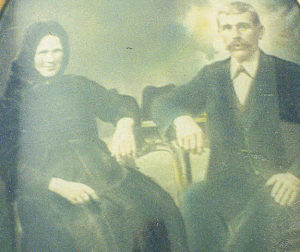
In 1857, a railroad was built connecting Szeged, Kikinda and Timisoara (Romania). The railroad brought economic boom to Kikinda and the next five years industry began to develop, including steam mills and brickyards.
“Christophoris Schlacter was in construction work; masonry and brick building construction in business for himself.” grandson Peter Turuc Jr.
Christophoris b. ABT 1873 m. 1 Nov 1892 Elizabeth Groszberger. They had eight children. The Bible that Elizabeth traveled to America with contained the birth dates of her siblings (link to photo here).
-
- Theresa Schlacter born 15 Oct 1894,
- Anton Schlacter born 11 Sep 1895, he worked briefly in Argentina, but returned home sick and died within a year.
- Kristoff Schlacter born 11 May 1898,
- Elizabeth Schlacter born 13 June 1901 Kikinda d. 5 May 1977, Chicago, IL. All Saints Cemetery, 700 N. River Road, Des Plaines, IL 60016. Ground 1, lot 55, blk 15.
- Mathias (Max) Schlacter born 25 Feb 1904 d. 11 Aug 1987, Tuscon, AZ.
- Sophie Schlacter born 01 Nov 1907,
- Helen Schlacter born 15 Apr 1915,
- Magda
Kikinda, Yugoslavia(1918-1992), today’s Serbia, is a mountainous country in south-central Europe. It was the northernmost country in the Balkan Peninsula. It’s people were divided into many religious and language groups, but they were united in a fierce national pride and a strong spirit of independence from outside interference.
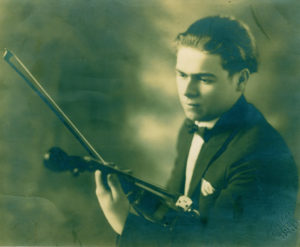
“My father (Max) only talked about his family’s past to his sister Elizabeth in their own language. He was very brief when us kids would ask and I always felt that he was very homesick.” Mary(Schlacter) Hofer, 12 January, 2001
The first settlers of Kikinda were Serbs who served in the Habsburg military as border patrols in 1751. They protected the borders against the Ottomans along the rivers Moris and Tisza. After the Pozarevac peace treaty, where an agreement between the Habsburg Monarchy and the Ottoman Empire was reached, the Ottomans lost the territory of Banat which led to huge job losses among the Serb population. As a result, they founded a new settlement in an effort to make a living from agriculture. Some decades later, along with the Serbs, Germans (Banat Swabians), Hungarians, and Jews settled the area. [1]
The Privileged District of Velika Kikinda was an administrative territorial entity of the Habsburg Monarchy between 1774 and 1876. It was an autonomous area centered around the town of Velika Kikinda, and mainly inhabited by ethnic Serbs. [3] About twenty years after the establishment of the settlement, on 12 November 1774, the Austrian Empress Maria Theresa, by way of special charter, formed the Velikokirkindski privileged dristrict–Regio-privilegiatus Districtus Magnokikindiensis, as a distinct feudal governmental administrative unit with headquarters in Kikinda. [4] Inhabitants of the District had, for that period, substantial economic, and even political privileges within the Habsburg Monarchy.
During her forty-year reign beginning in 1740, empress Maria Theresa regarded both the Jews and Protestants as dangerous to the state and actively tried to suppress them. Having inherited the traditional prejudices of her ancestors, she was known as the most anti-Semetic monarch of her time–this was open and actually considered to be a product of deep religious devotion. She imposed extremely harsh taxes on her Jewish subjects, and in December 1744 proposed to her ministers the expulsion of Jews from her hereditary dominions. She also transferred Protestants from Austria to Transylvania and reduced the number of religious holidays and monastic orders. In 1777, she was forced to grant them some toleration, however, by allowing them to worship privately when her brother Joseph threatened to leave calling her religious policies unjust and harmful. Her actions during the late stages of her reign contrast her early opinions and she forbade the forcible conversion of Jewish children to Christianity in 1762, and in 1763 she forbade Catholic clergy from extracting surplice fees from her Jewish subjects. In 1764, she ordered the release of those Jews who had been jailed for a blood libel in the village of Orkuta. [5]
The entry of the Serbian army into the city of Kikinda in 1914 represented the achievement of the Serbs of Kikinda in striving to unite with Serbia. During this time the city’s economy suffered greatly because it was located in the hinterland, between two borders, with communication lines disconnected. [1]
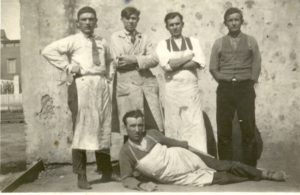
Anton Schlacter worked briefly in Argentina, but returned home sick and died within a year.
Relations between Austria-Hungary and Serbia deteriorated in the aftermath of the May Overthrow in 1903. Almost immediately, the new Karađorđević government aligned itself with the Russian Empire and oriented its foreign policy away from its long time patron, the Habsburgs, and Austria-Hungary. By 1914, due to suspicion of spying and resentment, Habsburg military courts began persecuting thousands of their own population as the “enemy within.” The military courts justified their resentment towards the ethnical-religious minorities within their own state as well as towards civilians in the occupied territories.
The anti-civilian offensive has been described as the beginning of a type of warfare dubbed “Vernichtungskrieg”, or “war of destruction”, ruthlessly practiced by Nazi Germany on civilian populations across Europe just over a quarter of a century later. Anti-Serb propaganda postcards on sale in the Austrian capital depicted Serbs as backward “Untermenschen” or “Sub humans” – a term later used by Adolf Hitler and the Nazis to describe Jews and Slavs. Some advocated that Serbs should be boiled alive in cauldrons or stuck on forks and eaten. The military justification for the massacre of civilians was that many were “partisans” engaged in a guerrilla war against the invading forces.
In the early months of WWI, between 11,400 and 36,000 civilians were condemned to the gallows. The lifeless bodies were left to hang by the noose for several days on the main square of the towns and villages–often times no particular event was needed to set in motion the martial law machine: a thoughtless comment, a flimsy suspicion or a hint dropped by an informer. There were also executions outside of the military tribunals by the commanding officer alone. [32]
An Austro-Hungarian execution squad near the Austria line prepares to fire upon Jugo-Slavs in Serbia(1917).
The soldiers invaded villages and rounded up unarmed men, women and children. They were either shot dead, bayoneted to death or hanged. The victims were locked into barns and burned alive. Women were sent up to the front lines and mass-raped. The inhabitants of whole villages were taken as hostages and humiliated and tortured. The perpetrators were the soldiers of the Austro-Hungarian army.” Austrian Historian, Anton Holzer [33]
At the end of World War I, the Austro-Hungarian Empire, of which Hungary had been a powerful member, collapsed. Hungary’s ethnically mixed border regions were carved out by the victorious Entente powers and granted to the Kingdom of Serbs, Croats and Slovenes, Czechoslovakia, and Romania – efforts which resulted in Hungary’s losing two thirds of its land area, and one third of its Hungarian-speaking nationals. Due to the loss, deep feelings of humiliation and resentment were felt among many Hungarians.[58]
The true causes of World War I are virtually unknown to most people. Historians claim that it was tension over territory in the Balkans. Austria-Hungary competed with Serbia and Russia for territory and influence in the region and they pulled the rest of the Great Powers into the conflict through their various alliances and treaties. Supposedly the catalyst was the assassination of Austro-Hungary’s Archduke Franz Ferdinand by a Serbian national acting on the orders of the secret Serbian society called Black Hand, which was backed by Serbian military officers. Allegedly this was to be the way for them to take over the Austria-Hungarian south-Slav provinces so they could meld into Greater Serbia (Yugoslavia). But why would this assassination spark a world war?
It is said that certain alliances that compelled first Germany to ally with Austria, who shortly after declared war on Serbia. Germany then decided to declare war against France for obscure reasons, while Russia was making military preparations in support of Serbia. Germany declared war on Russia on August 1, 1914. The next day, Germany and the Ottoman Empire signed a treaty, creating the Ottoman-German Empire. Britain declared war on Germany just two days later in response to Germany’s threat to Belgium if Belgium did not allow access to German troops in their campaign.[66]
The propaganda that a German U-boat had breached cruiser rules by firing on a passenger ship shifted Americans to move from its isolationist policies to an international mindset that would send the U.S. Military to foreign lands to fight for the cause of a foreign nation. When the RMS Lusitania sunk, the public was unaware of the fact that the British ocean liner was in breach of cruiser rules and was carrying munitions to Britain—it was not a mere passenger ship. Out of nationalistic pride, a warlike mentality was instilled and throughout almost the entire 20th century, the U.S. Has been embroiled in war after war under the lie sold to the masses that we must “defend our own interests overseas.”
During the 1920s, most Americans did not want to get involved in world affairs and they regretted their involvement in WWI. America had gained very little from the war and had lent large sums of money to countries that now were unable to repay them. Throughout much of the 1920s and 1930s, foreign policy was largely dominated by an isolationist Congress. The Isolationism was highlighted when the senate refused to ratify the Versailles Treaty which called for the creation of the League of Nations. The Neutrality Act of 1935, according to Congress, which was created because of the U.S. involvement in past wars due to the death of Americans on the high seas, prohibited the President from transferring arms to any belligerent nation. In 1937 it was amended to include a “cash and carry” provision. Nations involved in war could now purchase weapons from the United States provided they carry the weapons away on their own ships. In 1939, when Americans learned that Europe was once again at war they sold war material to Europe strictly on a cash basis–Europe had not paid its debt from the last war.
When the isolationist Congress failed to check Adolf Hitler and Nazi Germany, Presidents were essentially given freedom to do as they wish in foreign affairs during the cold war. Immediately following WWII, President Harry Truman worked to make sure that the country would not return to its policies of isolationism. Because the United States did not assert world leadership after WWI, the interwar period was wrought with economic and political instability. Truman felt that the United States would have to play a leadership role in order to promote stability in the international system. The Truman doctrine speech and the Marshall Plan both reflected a U.S. Commitment to remain in Europe, and the new U. S. designed United Nations World Bank and International Monetary Fund represented a U.S. Pledge to manage the international system. Congress willingly took a back seat to President Truman in large part because of the new international role assumed by the United States.
Western Civilization has largely been shaped by the esoteric philosophies of secret societies working through the influence of members in strategic political positions. Most secret societies are based on the basic philosophy of deism which is based on human reason rather than revelation (Freemasonry, Rosicrucianism, Illuminsim, etc.). They all plan to establish a one-world society based on human reason and personal freedom. A democracy can be easily changed into a world society, especially if wars can be used to persuade the masses to seek safety and peace in a world federation of states.
The secret powers behind governments, controlled by an international cabal of super-capitalist industrial and banking barons given to the deception of subversive members of the Illuminati, were setting the stage for the moral and spiritual destruction of Western Civilization which had been established upon the biblical ethic found in God’s written Word. Britain had been the unchallenged “Christian” nation, but its use of the globalist plans of the Illuminati had run its course. Now Britain’s supremacy had to be tempered by revolution in its colonies and the sapping of her military might through warfare in the causes of other nations. Sadly, the ensuing history of the Allies after WWI has shown that such wars destroy both the morale and the morals of a nation. Now it was time for the United States to rise in military supremacy for a time in order to lead it into constant conflicts that would eventually destroy its morale and morals. For that reason America’s policy of isolationism must be overturned.
Research into historical and government documents reveals how American-owned super-national corporations actually aided Hitler by helping build Germany’s war machine. General Electric, Henry Ford, General Motors, and DuPont corporations were part of the military-industrial complex Dwight D. Eisenhower warned about. Historical documentation also opens our eyes to the fact that Franklin D. Roosevelt worked to implicate the United States in the war in Europe according to a promise he had made to Britain’s Prime Minister Winston Churchill. There was no reason for the United States to enter war against Germany.[12]
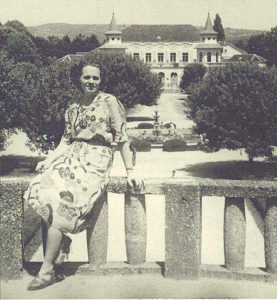
In the winter of 1941-1942, Hitler took Romania, Hungary, and Bulgaria. Then Hitler turned his attention to Russia. Despite the non-aggression pact Hitler signed with Stalin, Nazi troops invaded Russia on June 22, 1941. With Russia at war with Germany, Churchill and Roosevelt now considered Stalin their ally against Hitler and the U.S. would send billions of dollars worth of weapons and other supplies to Stalin over the next few years enabling Communists to drive the Germans out of Russia. Unfortunately, this aid would also help Stalin enslave Eastern Europe after the war.
“With the new wars in Europe, one day Christophoris Schlacter’s business equipment was taken from him.”–grandson Peter Turuc Jr.
“Magda Schlacter, kid sister of Elizabeth, was just a baby when her sister and brother emigrated. Later, Magda lived in Belgrade and married Sereden Stefanovic. He was a shoe salesman. She reported that one day the parents were taken off and never seen again. Because Magda had married and taken a new name, she was spared.” Peter Turuc Jr.
Joe Turuc recalled Magda retelling their story, “The parents were dragged out of their home and shot while two younger daughters hid in the fields.”
“Dear Aunt Mary S., enclosed is Uncle Max’s sister-in-Europe address. It may be a good idea to write her before going to Yugoslavia. My mother wrote to her in German. I think Serbian is the Yugoslav dialect spoken in Magda Stefanovic’s area.” Peter Turuc Jr., 26 Aug 1987
“Magda also warned that we also need to fear the Arabs here in America.”–Peter Turuc Jr.
In 1941 German troops occupied Kikinda. The Banat region was made an autonomous region within Serbia and was placed under the control of the region’s German minority. The city was overtaken on 6 October 1944, and since 1945, it has been part of the autonomous Province of Vojvodina within the new Socialist Yugoslavia. [1] By the middle of October 1944, immediately after the take-over by the Russians and Partisans, Kikinda became a torture and murder camp for over 1,000 defenseless civilians. It was the central camp for the northern part of the Banat until the end of 1946. [65]
“Peoples of Yugoslavia: Serbs, Croats, Slovenes, Montenegrins, Macedonians and others! Now is the time, the hour has struck to rise like one man, in the battle against the invaders and hirelings, killers of our peoples. Do not falter in the face of any enemy terror. Answer terror with savage blows at the most vital points of the Fascist occupation bandits. Destroy everything – everything that is of use to the Fascist invaders. Do not let our railways carry equipment and other things that serve the Fascist hordes in their struggle against the Soviet Union. Workers, Peasants, Citizens, and Youth of Yugoslavia……to battle against the Fascist occupation hordes who are striving to dominate the whole world.”
This call led to an intensive campaign against the Germans. Tito sent out his best men to the regions – they were usually born in the region they were sent to. Josip Broz Tito himself took charge of Serbia. The response to Tito’s call to arms was huge. Tito could rally his troops via a radio station called ‘Free Yugoslavia’ set up in the Soviet Union. [46]
Of Danubian ethnic Germans who served in the German military, over half perished after the end of the war in Yugoslav camps, including about 150,000 of the troops who had surrendered to British military authorities in the armistice of May 8, 1945 and were turned over to Communist Yugoslav partisans. More than 7,000 captured German troops died in Communist-ordered 800 mile “atonement marches” or “Marches of Shame” from Austria’s southern border to the northern border of Greece and many German soldiers in captivity in late summer of 1945 were thrown alive into large pits and executed, victims of mass shooting and torture. Lastly, in the ten years following 1945, an additional 50,000 perished from malnutrition and exhaustion, worked to death as Yugoslavia’s slaves. After 1986, a report appeared showing that out of about 194,000 prisoners, at least 80,000 probably even 100,000 died or were murdered.
During the final months of World War II, under Tito’s Communist state, one of Tito’s first acts was to confiscate all property of all ethnic Germans without compensation, declaring those of German origin as “enemies of the people” with no civil rights. Next, their Yugoslav citizenship was canceled. German authorities had evacuated 220,000 ethnic Yugoslav Germans to Germany and Austria by the end of the war, but for those remaining, very few found safety. Even after having been driven out on foot and by train, Allied occupied Germany and Austria denied asylum and turned them back to the communists who herded them up at gunpoint and sent them back to communist slave camps.[46]
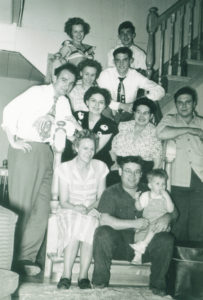
The Schlacter family: row 1: Peter Turuc Jr, Mary Schlacter, Max Schlacter holds grandson; row 2: Dolores Turuc, Elizabeth (Schlacter) Turuc, William Schlacter; row 3: Dolores (Schlacter) and Bob Lamping; row 4: Mary Alice (Schlacter) Hofer. (ABT 1948)
Max (Matia, Mathias)Schlacter (brother of Elizabeth) b. 24 Feb 1904 Yugoslavia d. 11 Aug 1987 Tuscon, AZ m. 17 June 1925 in Chicago, Illinois, Mary Anna Lange b 6 July 1904 St. James, MN d. 23 June 1999 Arlington, TX. He was a butcher for a time and then worked as a mechanic at Chicago’s Ohare Airport. 1927—6 October, Max Schlacter is Naturalized; age 23; one son William, 1 year; residence—443 S. Halsted St., Chicago; from The Kingdom of Serbs, Croates, and Slovenes (Petition Volume 236, #34358.)
Max and Mary Schlacter three children(1940 Census Here): 1. William Anthony Schlacter b. 24 Aug 1926 m. 20 June 1953 Chicago Adeline Florence Louise Zalewski b. 1 May 1926. They live in Dublin, CA. They had 4 children. 2. Dolores Schlacter b. 1931 m. 7 April 1956 Bob Lamping.
3. Mary Alice(Ellis) Schlacter b. 1930.
Navy Pier; early Chicago.
Pete Turuc Jr. recalls the story about his uncle, Max Schlacter, who once had a sailboat that he stored on the old navy pier in Chicago. One day he took it out on Lake Michigan with a friend and was taken adrift down to Indiana. Peter’s mother, Elizabeth Schlacter, called the police when they didn’t make it back before sunset. Although they eventually made it back safely that night, Max decided to add a small motor to the boat before going out again.
“Dear Mary, …I remember when I was a kid, dad would take us to see Elizabeth and her three boys on Seminary Ave.. I believe your dad (Peter Turuc Jr.) was working at a bakery at that time. When I was older, your dad showed me some dance steps at a ballroom. I believe he was a dance instructor then. That’s when I started to love dancing…” Mary A. (Schlacter) Hofer 2 February 2001
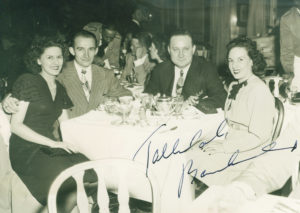
Pete Turuc Jr. met his wife at the Aragon Ballroom. The Aragon ballroom had instructor night on Tuesday night. The club was called the 400 Club. Members came to help beginners learn how to dance. Members had free admittance to two ballrooms. Pete’s number was 476 to prove he was a member which involved taking a test. The “Jitter Bug” was not allowed. A big bouncer would shake his finger if you attempted to dance that way. They tried to keep a refined dance place. The Aragon Ballroom was Chicago’s famous North side night spot.
Another popular spot was the Cuban Village which was across the street from Vine Gardens in Chicago. It had Latin dancing and floor shows. Pete took Peppie and Estel, the instructors, over to the Frank Morgan Dance Studio, where he was teaching at the time, and they gave a Latin dance demo. At the Frank Morgan Dance Studio Pete did a dance demo for Fred Astaire. He got to meet him while he was there looking for a place to open his own studio. Frank Morgan was trying to interest him in a deal. Pete’s first dance job was at Arthur Murry Dance Studio on 64 E. Jackson Blvd. At that time Frank Morgan was teaching alongside him. Shortly after he opened his own studio and Pete worked there. Pete worked at a bakery while he attended high school at Lane Tech. Then he worked at the Buick Motor division’s air craft engine manufacture in Melrose Park. He worked at the Douglas Air Craft assembly plant at O’Hare Field assembling air craft and sheet metal for a time and then, when the war started, he started working at dance studios when jobs were scarce. He returned to the bakery for awhile and then did state operating engineer work for the next 40 years.

The international politics which led to WWI and WWII brought the establishment of socialism on three major continents by the end of WWII. Roosevelt’s New Deal socialism in the United States was fortunately buffered by the Christian populace and the American free enterprise system, but the Soviet socialism in Russia and
Eastern Europe and National Socialism (Nazism) in Germany was much more devastating. Both WWI and the League of Nations were employed by secret powers behind the government—both destroy America’s morals and morale. Another way to destroy America’s morale would be to tax people to the point where they saw little reward for their labor as with the imposition of an income tax.
The North Korean invasion of South Korea confirmed in President Truman’s mind the wisdom of this new approach as it was demonstrated that the perceived monolithic communist movement was prepared to use force to expand its base. The emergence of the imperial presidency came into view in 1950 when Truman, in his haste to repel the North Korean Invasion of South Korea, dispatched troops into Korea without a congressional declaration of war and without even having consulted Congress.
The Korean War was the first war engaged in unconstitutionally without a declaration of war by Congress. In order for this to happen, the Truman administration in cooperation with the United Nations denied the UN action was a war, and called it a “police action.” This was the first time the United States surrendered its military sovereignty to a foreign power largely administered by the Soviet Union and Red China.
As our nation was subjected to death and maiming of its youth in war once again, the Truman Administration did not fight to win, but to merely contain communism from invading South Korea. America suffered a defeat in warfare due to the communist influences in its own government thwarted efforts toward victory.
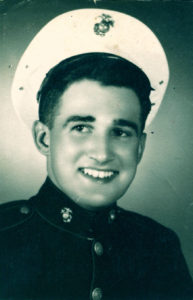
Joseph Turuc served in the U.S. Marine Corps during the Korean Conflict. He was in the Third Marine Division. He was a lifetime member of the V.F.W., the Moose and the Marine Corps League. The Korean conflict is based on the division between the Democratic People’s Republic of Korea in the north and the Republic of Korea in the south, both of which claim to be the government of the entire peninsula. During the Cold War, North Korea was backed by the Soviet Union, China, and other communist states, and South Korea was backed by the United States and its allies. The division of Korea occurred at the end of World War II in 1945, and tensions erupted into the Korean War in 1950. When the war ended, the country was devastated, but the division remained. North and South Korea continued a military standoff with periodic clashes. The cold civil war survived the collapse of the Eastern Bloc of 1989 to 1991. The US maintains a military presence in the South to help deter any potential attack from the North.
In 1946, with the end of Soviet Communism, Winston Churchill had delivered a speech at Westminster College in Fulton, Missouri, proclaiming: “From Stettin in the Baltic to Trieste in the Adriatic an iron curtain has descended across the continent.” Forty-six years later, on May 6, 1992, Mikhail Gorbachev returned to Fulton as the leader of the Soviet Union–as the last leader of the Soviet Union, Gorbachev had fostered the reforms that went beyond his own expectations and led to the dissolution of the Soviet Union. [37]
Indiana sand dunes 1940s. Peter Turuc & Dolores Schimel; Bob Schimel & Dolores Cichinski.
In 1948, the search for peace in the Middle East continued with Israel signing an accord with the Palestine Liberation Organization (PLO) in September 1993 and a peace treaty with Jordan in October 1994. The accord with the PLO called for a five-year period of limited Palestinian self-rule in the Gaza Strip and the town of Jericho on the West Bank. By December 1994 the Palestine National Authority (PNA) controlled education, health, social welfare, taxation, and tourism in these areas. Negotiations continued despite outbreaks of violence by both Arabs and Israelis who oppose the accord. July 1, 1995, was set as the deadline for an agreement on elections and expanded self-rule. The Jordanian treaty ended the state of war between Israel and Jordan. In the treaty, the two nations promised to address territorial boundaries, economic relations, and to improve security. Both Syria and a minority of Islamic activists opposed the treaty, believing that it would undermine the Palestinian claim on Jerusalem. [34]
On December 6, 2017, President Trump declared that the U.S. will recognize Jerusalem as the capital of Israel. Trump’s proclamation ended a 22 year policy that ignored a 1995 act of Congress urging the federal government to recognize Jerusalem as Israel’s capital and relocate our embassy to Jerusalem. The Jerusalem Embassy Act had passed with an overwhelming bipartisan majority in 1995, and was reaffirmed by unanimous vote of the Senate only six months prior to Trump’s proclamation. The act had contained a clause which allowed past presidents Clinton, Bush, and Obama to delay its implementation. The waiver needed to be signed every six months.
Immediately after the U.S. recognized Jerusalem as Israel’s capital, the Islamic world expressed outrage and Hamas stepped up its firing of rockets out of Gaza. Palestinian President Mahmoud Abbas had declared that he no longer recognizes the U.S. as a mediator in Israeli-Palestinian peace talks. Within weeks of the proclamation, an Egyptian sponsored resolution was approved by the UN Security Council to reverse Trump’s proclamation. All 14 countries on the council except the United States supported the resolution, including the United Kingdom.
Ambassador Nikki Haley vetoed the resolution: “The United States will remember this day in which it was singled out for attack in the General Assembly for the very act of exercising our right as a sovereign nation. We will remember it when we are called upon to once again make the world’s largest contribution to the United Nations. And we will remember it when so many countries come calling on us, as they so often do, to pay even more and to use our influence for their benefit.
America will put our embassy in Jerusalem. That is what the American people want us to do, and it is the right thing to do. No vote in the United Nations will make any difference on that.
But this vote will make a difference on how Americans look at the UN and on how we look at countries who disrespect us in the UN. And this vote will be remembered.”[86]
Alan Dershowitz comments: “The resolution fails to recognize that it was the December 2016 Resolution–the one engineered by lame duck President Barack Obama–that changed the status of Jerusalem and complicated the efforts to achieve a compromise peace. Before that benighted resolution, Jersalem’s Western Wall, the Jewish quarter and the access roads to hebrew University and Hadassah Hospital were widely recognized as part of Israel–or at worst, as disputed territory.
Everyone knew that any peace agreement would inevitably recognize these historically Jewish areas as an indigenous part of Israel, any more than Bethlehem was illegally occupied by the Palestinian Authority. Both Jerusalem and Bethlehem had originally been deemed part of an international zone by the United Nations when it divided the British mandate into two states for two people–a decision accepted by Israel and rejected by all the Arab nations and the Palestinian Arabs in that area. Jordan then attacked Israel and illegially occupied the Western Wall and Jewish Quarter in Jerusalem…
Until Obama engineered the notorious December 2016 Security Council Resolution that declared the Western Wall, the Jewish quarter and the access roads to be illegally occupied by Israel, thus changing the status quo. This unwarrented change–long opposed by the United States administrations–made a negotiated peace more difficult, because it handed the Jewish holy places over to the Palestinians without getting any concessions in return, thus requiring that Israel ‘buy’ them back in any negotiation.
Why did Obama change the status quo to the disadvantage of Israel? Congress did not want the change. The American people did not support the change. Many in the Obama administration opposed it. Even some members of the Security Council who voted for the resolution did not want the change. Obama did it as lame duck revenge against Prime Minister Benjamin Netanyahu, whom he hated. His motive was personal, not patriotic. His decision was bad for America, for peace and for America’s ally, Israel. he never would have done it except as a lame duck with no political accountability and no checks and balances.”[87]
The world’s two largest religions, Roman Catholicism and Islam, claim jurisdiction over Jerusalem and both are anti-Semitic. The Vatican has issued over 100 anti-semitic documents and taught Jews should be cursed because they killed Christ and Mohammed says, “The last day will not come until the Muslims destroy the Jews.” The Catholic’s Jesus death on the Cross was not sufficient to save them and Islam’s Jesus did not die on a cross and is not God–a mere prophet. In 1994 the Vatican issued a publication entitled: “Spiritual Bonds Which Unite Us: 16 Years of Christian-Muslim Dialogue.” It seems they have a lot more in common now a days. They both rule with an autocratic government and have a history of forced conversions, and killing those who oppose them. Their beliefs both deny the authority of Scripture. Muslims reject the Bible as the final revelation from God and say that the Qu’ran is the final testament and their supreme authority. They both use prayer beads to avoid punishment for sin. They both take pilgrimages to obtain favor from God. Catholics take pilgrimages for religious purification and the promise of indulgences. Muslims take pilgrimages to Mecca, a mandatory religious duty that must be carried out at least once in their lifetime. Both have human mediators. Catholics rely on priesthood to dispense salvation through sacraments and seek Mary to intercede with God on their behalf. Muslims rely on the intercession of Muhammad on judgment day. He will prostrate himself before Allah who will say, “O Muhammad! speak, it will be heard; and be given; intercede, and it will be approved.” Both have a works-righteousness salvation. Allah will place one’s good and evil works on the divine scale: “Those whose scales are light are those who lose their souls in hell” (Sura 23:102, 103). In Catholicism, sacraments, good works and obeying law are necessary for salvation. [14]
Pope Benedict XVI resigned on February 28, 2013 opening the way for Cardinal Jorge Mario Bergoglio of Argentina to be elected as the 266th pope, taking the name Francis I. Bergoglio is the first Jesuit pope. In the fall of 2015, he addressed Congress with his global Marxist agenda. Then, on February 12, 2016, he signed an Ecumenical Declaration with Russian Orthodox Patriarch Kirill which was the first meeting of the leaders of these two denominations since their split in 1054.

Through the 1950s and 1960s, the U.S. Foreign policy was shrouded in secrecy. The Eisenhower doctrine relied heavily on the CIA and covert operations to contain Soviet influence. The special emphasis on covert operations, stemming largely from Eisenhower’s budgetary concern brought about by the financial costs of the Korean War, were made even more cozy by the fact that Eisenhower’s secretary of state, John Foster Dulles, and his director of the Central Intelligence Agency, Allen Dulles, were brothers. Covert operations were relatively inexpensive when compared to the costs of troop deployments, and they enabled the president to manipulate the internal working of foreign governments without the knowledge of Congress and the American public. Eisenhower also relied on his Policy of Massive Retaliation, the threat of using nuclear weapons against China, to bring the Korean War to an end in 1953.
In 1950, Republican Senator Joe McCarthy contended that there were many communists and Soviet spies not only within the mainstream media, Hollywood movies, but also within the U.S. federal government. McCarthy’s reputation was destroyed by left-leaning media and members of Congress.[88]
In 1959, although the leftist media portrayed Fidel Castro as a harmless reformer in spite of his numerous attempts to take over the Cuban government with support from the Soviet Union, Cuba suffered censure and boycott by the United States. Castro could have established the first communist government in the Western Hemisphere. In 2016, however, Marxist Barack Obama acted unilaterally, without consent from Congress, and dealt the Castro regime under Fidel’s brother Raul, a tremendous economic favor even though Cuba had ties to terrorism.
Lt. Gen. Ion Mihai Pacepa, the highest-ranking official ever to have defected from the former Soviet bloc, wrote in his 1987 book, Red Horizons, to expose the nature of the Romanian Nicolae Ceausescu regime as well as “communist influence operations” directed against the U.S. and other Western nations. The contents of his book were broadcast into Romania on Radio Free Europe and credited with inspiring the counterrevolution that brought down the regime and the execution of Ceausescu.
Former three-star general in Communist Romania, Pacepa defected to the United States in July 1978 following President Jimmy Carter’s approval of his request for political asylum. Today, he reminds us that it was Marxist doctrine that killed some 94 million people and transformed a third of the world into feudal societies in the middle of the 20th century. He is a columnist for the Internet conservative blog site PJ Media. He also writes articles for The Wall Street Journal and various American conservative publications, such as National Review Online, The Washington Times, the online newspaper FrontPage Magazine and the World Net Daily.
During his years at the top of Marxist Romania, he describes Marxism as a cancer which works so silently that you will only detect it when it is too late. At Stalin’s request, all East European countries “liberated” by the Red Army at the end of World War II began their march toward Marx’s communism in the guise of socialism. Just a few months after the Red Army “liberated” the Kingdom of Romania, Stalin merged that country’s Communist Party with the Social Democratic Party, producing the Workers’ Party.
Although he has written over the years for such publications as The Wall Street Journal, the American Spectator and National Review, his column in PJMedia was what represented, for the first time, that international Marxism had assumed a major influence over the Democratic Party. Pacepa, who once served as a top aide in the Romanian communist regime, reported that he was personally convinced that Obama was a Marxist and that he could recognize the symptoms because he once lived through them, and he believed it was his obligation as an American citizen to help the conservative movement to prevent any further spread of Marxism in his adopted country. [1]
After Chicago Tribune’s conservative columnist Steve Chapman attacked Rep. Allen West as crazy for discussing communist infiltration of the Democratic Party, Pacepa provided a video of an awards ceremony that filmed Democratic Rep. Danny K. Davis, an old ally of Barack Obama in the socialist New Party, accepting an award in Chicago from the CPUSA (Communist Party USA) but Chapman remained silent. Columnist Wes Vernon questioned why, if Chicago is the neighborhood of Chapman’s newspaper, he hadn’t had easily access to the local congressman’s award possibly nearby the Tribune Building.
Although we brought down the Soviet Union, the agenda of that corrupt system is alive and well in this country’s academia, media, governments and churches. Based on the belief that individual liberty means individual license to do as one pleases, “You can’t legislate morality” is their cry, in spite of the fact that most governments that have ever existed have based their laws upon a moral framework that distinguishes between right and wrong.
In 1969, “Psychology Today” declared that we must “face our own inner experiences without the guidance of traditional…..foundation stones of Judeo-Christian experience….We are compelled to erect our own morality, arrive at our own faith and belief…” [63]
Explanations for why people behave the way they do and how they change have concerned philosophers, theologians, cultists, and occultists throughout centuries. When it comes to behavior and attitudes, and morals and values, we are dealing with religion—either Christian faith or any one of a number of other religions. All forms of psychotherapy are religious. Both Freud and Jung led their followers in the quest for alternative understandings of mankind and alternative solutions to problems of living. In his book “The Myth of Psychotherapy,” psychiatrist Thomas Szaz says, “The basic ingredients of psychotherapy are religion, rhetoric, and repression.” [80]
Self-centeredness was once considered a human failing, but now self is at the center of most psychotherapies. Instead of being denied, self is now loved, esteemed, and promoted. Right and wrong have lost their meaning because, according to modern psychology, none of us is responsible for anything we do. We are all victims, driven to do whatever we do by the traumas we suffered as children, traumas which have created hidden motives and urges buried in the unconscious and are thus unknown to us and beyond our control. Instead of being held accountable, therapy is given. Everything from disobedience to murder is excused as some syndrome or addiction. Before Freud, no educated adult could find a plausible reason to avoid responsibility for his actions. Left to psychoanalysis and psychodynamic psychology, man has become blameless. It is not done by covering his faults, but by tracing them back to his childhood, when he was morally innocent.[43]
Numerous studies by secular psychologists and psychiatrists have demonstrated that the higher one’s self-esteem, the more likely one is to be immoral, violent, and prone to trample on the rights of others. Newsweek’s cover announced its feature article in large letters: “The Curse of Self-Esteem: What’s Wrong With the Feel Good Movement.” [81]
On December 5, 1980, the United Nations General Assembly formulated the Global Education Project. Based on UN assistant secretary-general Robert Muller’s World Core Curriculum, a model for global education for every nation was set up in Costa Rica called the University for Peace. Stressing “thinking skills” rather than academics, it is designed to instill non-competitive group consciousness, critical thinking, and global citizenship. Muller is an evolutionist who believes man is about to take a quantum leap toward becoming a new species. He believes that the earth is going to be transformed into the “planet of God.” To him God is the “planetary age” or the “age of Aquarius.” He agrees with the Hindus in calling the earth God.
This is the foundation of our radical environmentalists today. They are striving for a spiritual at-one-ment with nature—a unified world system where the individual is subordinated into the whole. This World Core Curriculum promotes Eastern meditation techniques, including “guided fantasies into space,” which is also called “out-of-body travel” or “astral projection.” Muller’s concepts are actually taken from occultist Alice Bailey’s writings which were channeled the spirit guide Djwhal Kuhl, also known as the Tibetan. These channeled spirit guides are from an alleged group of evolutionary beings who have attained a high degree of evolutionary perfection which released them from bondage to the material world. This holistic view of life views the planet as interconnected, with no life form having any greater standing than any other life form. Imperfect while we are still man, our next stage is said to take us to a level that is psychologically, spiritually, and physically superior where we will be a true “planetary citizen.” [44]
Scripture tells us that man’s inward thoughts and intents of the heart are corrupt (Jeremiah 17:9). Scripture also tells us that the love of many will grow cold toward the end of the church age and that sin will abound (Matthew 24:12). Even in the Millennium Jesus and His saints will need to rule with a “rod of iron” against those who will rebel against His government (Rev. 2:27; 12;5, 19;15). God always allows evil to exist in the world to test the hearts of men so that none will be without excuse. We are not to take for ourselves what He has not ordained.
Romanian Diaspora: Romanian Diaspora We are a group of Free World citizens and the first generation of immigrants from the old country of Romania. Most of us have experienced the communist tyranny inflicted upon our brethren by the Soviet occupation of Eastern Europe. America and its allies had won World War II against Nazi Germany and Japan and had rebuilt Western Europe and the Far East into very prosperous, democratic societies. Yet, for more than 40 years it could not decisively win the Cold War against the Bolsheviks from Moscow that enslaved 100 million people behind the Iron Curtain. Food shortages, crowded living conditions, brainwashing education in the Marxist-Leninist ideology, military conscription for all, forced labor disguised as voluntarism and primitive healthcare services, marred our lives for more than two generations. The Free World was far away and only attainable by hook or by crook! The few life-threatening choices were: swimming the Danube River to Yugoslavia and walking all the way to Trieste, Italy. Or, floating on makeshift rafts on the Black Sea to Istanbul, Turkey. Or, daring the deadly minefields of the Iron Curtain between Hungary and Austria, if the brave defector would have made it alive through the Romanian “shoot-and-kill” border patrols in the territories of Western Transylvania. Of course the easiest way into the Free World was to legally cross the borders by plane, by car, by donkey cart or on foot. But that was only possible, if the secret police thugs from the capital city of Bucharest would have allowed such travel to take place. Most of the political refugees in the 50s, 60s, and 70s like some of us in this group, were lucky Romanians that received a once-in-a-lifetime passport to freedom! We were either performers traveling to the West, or professionals people on an official delegation who decided not to return to the Romanian Gulag. However, a good number of us were ethnic minorities, mostly Jews, Germans, Lebanese or Greeks who escaped the Hell on Earth of communist Romania, after we had been ransomed for hard currency, by our relatives living in the Free World. This is the year of 2013, nearly one generation later and we are all free now! We are ready to tell our stories! We are grateful and loyal to our adoptive countries, America, Sweden, Germany, Spain, France, England, Canada and all the other Western democracies that adopted us with open arms. Let Freedom Ring! (Romanian Diaspora; Public Group on Facebook; created 11/28, 2013)
HIS STORY: The Trinity, the Triune God already existed and is eternal. “In the beginning was the Word, and the Word was with God, and the Word was God. He was with God in the beginning. Through Him all things were made; without Him nothing was made that has been made.” John 1:1-3
Prior to the creation of the universe, the Word of God existed and there are indications in the Scriptures from the genealogies in Genesis 5 and 11, and the way they are written, that there is evidence to believe that creation event took place some 4, 000 years before Christ. The agent of this event is found in verse 1, “In the beginning ‘God’ created the heavens and earth.” This is the only true God; the only self-existent divine Being consisting of Father, Son, and Holy Spirit—omnipotent, omnipresent, and omniscient. He has always existed and was created by no one. This is who created the universe.
“Before the mountains were born or you brought forth the earth and the world, from everlasting to everlasting you are God.” Psalm 90:2
“By faith we understand that the universe was formed at God’s command, so that what is seen was not made out of what was visible.” Hebrews 11:3
Only Creation explains the difference between man and animals, it is an unbridgeable chasm. God created man altogether greater than any higher animal because we are created in His image. Only Creation explains moral nature. Every single tribe of people throughout history has had a moral value system; a distinction between right and wrong. This comes from the conscience that was planted in man’s heart. The consciousness of his moral nature is the basis of all law and sanity and of all purpose and meaning in life. This is not from a physiological transformation of any cell because we are now talking about the area of the soul.
“Then God said, ‘Let us make man in Our image, in Our likeness, and let them rule over the fish of the sea and the birds of the air, over the livestock, over all the earth, and over all the creatures that move along the ground.” Genesis 1:26
This is the separation between man and everything else. The Trinity is also being taught to us in this verse, too: “Let ‘Us’ make man in ‘Our’ own image.” Within the moral universe in which we live, the existence of the concept of good and evil and sin and death is only explained by the Genesis Creation account.
“For by Him all things were created: things in heaven and on earth, visible and invisible, whether thrones or powers or rulers or authorities; all things were created by Him. He is before all things, and in Him all things hold together.” Colossians 1:16,17
The whole universe did not exist prior to Genesis 1:1. Evolution believes that matter and the universe are eternal; the eternality of matter. That viewpoint is really a pagan viewpoint. The Scriptures claim it was created out of divine fiat; by the spoken word of God. God spoke and it came into existence. His eight commands explain everything in the universe. In speaking the universe into being, God was willing that it should appear and become, and it did. His thought was shaping it exactly from the least cell in Adam to the furthest star and galaxy at the same moment. For in Him all things were created and in Him all things hold together. When we look at the farthest galaxy we can see and then we look in the microscope at the smallest particle we can see and realize that one personality designed and created that. He spoke a word and things came into existence. This power is resident in the Word that we have written in the Bible as well. Hebrews 4:12 says that the Word is alive and active and powerful.
The world was created “ex nihilo,” out of nothing, by divine fiat, by the spoken word of God, and in order by days. The word for days in Genesis is “yom.” The normal meaning of “yom” is a 24 hour day and whenever “yom” occurs with a number like “the forth yom” it is always a 24 hour day. When it announces “there was a morning and an evening” we can’t mistake the fact that it is a 24 hour day. The next question is “Why six days”? The answer is in Exodus 20:9-11 in the giving of the Ten Commandments, “Six days you shall labor and do all your work, but the seventh day is a Sabbath to the Lord your God. On it you shall not do any work, neither you, nor your son or daughter, nor your manservant or maidservant, nor your animals, nor the alien within your gates. For in six days the Lord made the heavens and the earth, the sea, and all that is in them, but he rested on the seventh day. Therefore the Lord blessed the Sabbath day and made it holy.” God gave mankind a pattern, an example. He applied it to Israel in the strictest way of the Sabbath Day being observed, but it is nevertheless a pattern for mankind to set aside a seventh day for worship and rest in their schedule.
“Because that which may be known of God is manifest in them; for God hath shewed it unto them. For the invisible things of him from the creation of the world are clearly seen, being understood by the things that are made, even his eternal power and Godhead; so that they are without excuse. Because that, when they knew God, they glorified him not as God, neither were thankful; but became vain in their imaginations, and their foolish heart was darkened. Professing themselves to be wise, they became fools. And changed the glory of the uncorruptible God into an image made like to corruptible man, and to birds, and four-footed beasts, and creeping things. Wherefore God also gave them up to uncleanness through the lusts of their own hearts, to dishonor their own bodies between themselves. Who changed the truth of God into a lie, and worshipped and served the creature more than the Creator, who is blessed forever. Amen. And likewise also the men, leaving the natural use of the woman, burned in their lust one toward another; men with men working that which is unseemly, and receiving in themselves that recompense of their error which was meet. And even as they did not like to retain God in their knowledge, God gave them over to a reprobate mind…” Romans 1: 19-28
In all creation, it is evident that His fingerprints are there. That man can look at what has been made, and with the reason that God has given, man can come the conclusion properly that God created this. Because man denies that is evidence of the sinfulness of man and the fallen depraved minds that we have today. Only Creation explains the intricate order of the universe. You cannot explain the degree and the depth of order in our solar system and our planetary system and in life by random chance. The geometry of nature, the construction of cells and the growth, and the efficiency of nature…. The Bible declares that man began at the top and because of sin fell to the bottom. This contradicts evolutionary social philosophers that teach that all of mankind’s social ills are a product of either hereditary or environmental problems. They are simply denying man’s depravity, man’s original sin. Legislators will not be able to create the perfect environment, and men will never obtain ultimate ideals. Genetics will not be able to reprogram and improve man to rid him of all of the evil and pain in this world. Man has already been tested under the most favorable conditions and he failed. Man’s problem today is not external, it is internal. [35]
“Therefore, just as through one man sin entered into the world and death through sin, so death spread to all men because all sin— “ Romans 5:12
GENEALOGY
Adam: Creation to 930 years; Seth: 130 to 1042 (912 years); Enosh: 235 to 1140 (905 years); Kenan: 325 to 1235 (910 years); Mahalell: 395 to 1290 (895 years); Jared: 460 to 1422 (962 years); Enoch: 622 to 987 (365 years); Methuselah: 687 to 1656 (969 years); Lamech: 874 to 1651 (777 years); Noah: 1056 to 2006 (950 years); Shem: 1588 to 2158 (600 years); Arpachschad: 1659 to 2097 (438 years); Shelah: 1694 to 2127 (433 years); Eber: 1724 to 2188 (464 years); Peleg: 1758 to 1997 (239 years); Reu: 1788 to 2027 (239 years); Serug: 1820 to 2050 (230 years); Nahor: 1850 to 1998 (148 years); Terah: 1879 to 2084 (205 years); Abraham: 2009 to 2184 (175 years); Isaac: 2109 to 2289 (180 years); Jacob: 2169 to 2316 (147 years); Joseph: 2260 to 2370 (110 years).
Notice the downward trend in the lifespan of the patriarchs very near the time of the flood. This strongly suggests that man’s lifestyle underwent a drastic change which contributes to our relatively short lifespan. Each of the first nine patriarchs had sons and daughters (Gen. 5) which implies that they had large families with the lifespan of Adam, Methuselah, Shem, and Abraham overlapping.
Throughout the history of the church, there are those people who come and they listen and sometimes they appreciate what’s being said ….sometimes they don’t, but they always put off coming to grips with the person of Jesus Christ and their response to Him. Life is so uncertain. Who knows if we will see you again next Sunday….if you will be on the earth? and I speak very frankly with you. Everyone is going to have to one day bow before this person Jesus Christ Paul tells us and confess that He is Lord. And yet for those who have come to know Him as Savior, it is not an ordeal, it is a joy. Because the difference in meeting God, whether it is meeting Him in love or in fear is whether you have responded to the provision of grace that God has made. If you respond to it and say “I accept by faith, I believe that Jesus Christ paid my penalty. I believe that He died for me—He is my Saviour. If a person believes that with saving faith, I mean you trust it—it is a certainty, then you will greet Him overjoyed, excited to see His face. As the song said, “Just to see a smile in your direction from Him will be glory for you.” But if you reject that provision, one day you will have to face Him in a horrible condition with no excuse, with no plea and with nothing to be brought forward but your sin and that will be the day you will hear the voice of the Son of God say, “Into all eternity you must go into hell.” I hope that you have considered that in your life. I hope that if you never have that you will consider it this morning. It’s the truth….simply acknowledge in your heart “it’s true.” Pastor Jim Mooberry [35]
REFERENCES
- LINK TO MANDULA & TURUC FAMILY PHOTOS HERE;
- LINK TO SCHLACTER PHOTOS HERE
- The Ancestors and Descendants of the Turuc and Schlacter Families
- Donauschwaben Villages Helping Hands (DVHH) ;
- Romanian Diaspora
- Revelation and Church History
-
-
- Cliff Kincaid, “Communist Defector Speaks Out on America’s Marxist Future,” Accuracy in Media; 12 June 2012.
- Wikipedia, Habsburg Monarchy; https://en.wikipedia.org/wiki/Habsburg_Monarchy ; 2/6/2018.
- Wikipedia, District of Velika Kirkinda; 2/6/2018.
- Jovan M. Pejin, Iz prošlosti Kikinde, Kikinda, 2000, page 34.
- Wikipedia, Maria Theresa; https://en.wikipedia.org/wiki/Maria_Theresa ; 2/6/2018.
- Rick Steve’s Europe, “Understanding Yugoslavia,” https://www.ricksteves.com/watch-read-listen/read/understanding-yugoslavia .
- Wikipedia, Danube-Cris-Mures-Tisa Euroregion; http://www.wikiwand.com/en/Danube%E2%80%93Cri%C8%99%E2%80%93Mure%C8%99%E2%80%93Tisa_Euroregion; 2/7/2018.
- Wikipedia, “Hunedoara Steel Works.” https://en.wikipedia.org/wiki/Hunedoara_steel_works.
- Wikipedia, Belgrade; https://en.wikipedia.org/wiki/Kikinda; 2/6/2018.
- Rolandia Your Local Expert For Romania, The Hunyadi Castle, https://rolandia.eu/hunyadi-castle/ ; 2/7/2018.
- Wikipedia, Corvin Castle; https://en.wikipedia.org/wiki/Corvin_Castle, 2/7/2018.
- Gabriel Kolko,”American Business and Germany, 1930-1941,” The Western Political Quarterly, Vol. XV, 1962, p. 715.
- Wikipedia, Yugoslavia; https://en.wikipedia.org/wiki/Kikinda; 2/6/2018.
- Mike Gendron, Proclaiming the Gospel, https://www.ProclaimingTheGospel.org , May 2018.
- Hannes Heer and Klaus Naumann, “War of Extermination: The German Military in WWII; http://www.berghahnbooks.com/title/HeerWar ; Berghahn Books; 11/30/2004.
- Sara M. Pike, “New Age and Neopagan Religions in America,” 2004.
- “The United States Becomes a World Power [1865- ],” Microsoft ® Encarta ® ’96 Encyclopedia (Microsoft Corporation, 1993-1995).
- Dave Hunt, “Occult Invasion,” Harvest House Publishers, 1998; http://www.thebereancall.org/
- Al Dager, “Education Reform,” Media Spotlight; http://www.mediaspotlight.org/
- “The Faithful Word: Creation Fact or Fiction,” Pastor Jim Mooberry; Mfairlady Old Testament Study, https://www.mfairlady.com/old-testament-study/
- Kay Hymowitz, New York Times, New York Values: How Immigrants Made the City, https://www.nytimes.com/2016/11/06/books/review/city-of-dreams-history-of-immigrant-new-york-tyler-anbinder.html
- Wikipedia, History of Chicago, https://en.wikipedia.org/wiki/History_of_Chicago ; 2/8/2018.
- Wikipedia, Kurucs, https://en.wikipedia.org/wiki/Kuruc; 2/8/2018.
- The History of Protestantism-Volume Third-Book Twentieth-Protestantism in Hungary and Transyvania, History of the Protestant Church in Hungary, compiled from original and authentic Documents. Translated by the Reverend Dr. Craig, Hamburg; with Preface by Dr. Merle D’Aubigne. Page 33. Lond., 1854.
- A Beka Book, “America Land I Love,” Pensacola Christian College, 1994, http://www.abeka.com/
- Gary Public Library Indiana Room; 220 W. 5th Avenue (219) 886-2484 http://www.garypubliclibrary.org/indiana-room/
- Cezar Petrescu, “Cei trei regi,” picture scan from this book: “Fotopress”; Wikipedia.
- Wikipedia; “Banat,” https://en.wikipedia.org/wiki/Banat
- Wikipedia, Revolutions and Interventions in Hungary 1918-1920; https://www.mfairlady.com/wp-admin/post.php?post=4490&action=edit
- Katja Wustenbecker, “German Americans During WWI,” Immigrant Entrepreneurship, https://www.immigrantentrepreneurship.org/entry.php?rec=214; 9/19/2014; retrieved 2/18/2018.
- A Beka Book, “The History of the World,” Pensacola Christian College.
- Jacob Zenzmaier; The World of the Habsburgs, “The War Crimes of the Habsburg Army Between Soldateska and Court Martial. http://ww1.habsburger.net/en/chapters/war-crimes-habsburg-army-between-soldateska-and-court-martial
- Independent, “A History of the First World War in 100 Moments: Austro-Hungarian Army Executed Civilians in Serbia;” http://www.independent.co.uk/news/world/world-history/history-of-the-first-world-war-in-100-moments/a-history-of-the-first-world-war-in-100-moments-the-execution-of-civilians-in-serbia-9244674.html
- Middle East Peace Process [1993-1994],” Microsoft ® Encrata ® 96 Encyclopedia (Microsoft Corporation; 1993-1995)
- “The Faithful Word: Creation Fact or Fiction,” Pastor Jim Mooberry; https://www.mfairlady.com/old-testament-study/
- A Beka Book; “America Land I Love,” Pensacola Christian College, 1994, http://www.abeka.com/
- Microsoft ’96 Encyclopedia: “The Rise of Fascism and World War II (1920-45).
- The World FactBook: Serbia and Montengro. http://www.cia.gov/cia/publications/factbook/geos/yi.html
- “Fall in Yugoslavia,” God’s World News, 10/27/2000.
- Michael Sturmer, “German Century,” 1999.
- Jonathan Sarfti, “The Nazis Planned to Exterminate Christianity,” “The Holocaust And Evolution,” Creation Magazine #24, 2002.
- Al Dager, “Allegiance: To Whom Do We Pledge?” Media Spotlight Vol. 25—NO. 3, http://www.mediaspotlight.org/
- Dave Hunt, “Occult Invasion,” Harvest House Publishers, 1998; http://www.thebereancall.org/
- . Al Dager, “Education Reform,” Media Spotlight; http://www.mediaspotlight.org/
- “Birth of the Computer [1940- ],” Microsoft ® Encarta ® ’96 Encyclopedia (Microsoft Corp., 1993-1995).
- History Learning Site, “The Resistance Movement in Yugoslavia; http://www.historylearningsite.co.uk/world-war-two/resistance-movements/the-resistance-movement-in-yugoslavia/
- Wallace H. Moore, The Conflict Concerning the German Language and German Propaganda in the Public Secondary Schools of the United States. Ph.D diss. (Stanford University, 1937), 33-34.
- Wisconsin State Journal (January 12, 1918). The bank changed its name to the American Exchange Bank.
- Giuseepe Molta, “Less Than Nations: Central-Eastern European Minorities after WWI” Vol.1; p. 170.
- Boldizar Voros, “Kun, Bela;” Oct 2014; International Encyclopedia of the First World War.
- Wikipedia; Bela Kun, https://en.wikipedia.org/wiki/B%C3%A9la_Kun
- Janos, Andrew, The Politics of Backwardness in Hungary, Princeton: Princeton University Press, 1982, p. 197.
- Hill, Raymond (2003-01-01). Hungary. Infobase Publishing. p. 33. ISBN 9780816050819.
- Istvan Deak, “Budapest and the Hungarian Revolutions of 1918-1919.” Slavonic and East European Review 46.106 (1968): 129-140. in JSTOR
- Borsanyi, Gyorgy The life of a Communist revolutionary pp. 197–8.
- History.com; U.S. Immigration Before 1965; https://www.history.com/topics/u-s-immigration-before-1965.
- Wikipedia, “White Terror (Hungary);” https://en.wikipedia.org/wiki/White_Terror_(Hungary); 2/23/2018.
- Randolph L. Braham (2002). The Nazis’ Last Victims: The Holocaust in Hungary. Wayne State University Press. pp. 30–31. ISBN 978-0-8143-3095-1.
- Spencer Tucker; Laura Matysek Wood (1996). The European powers in the First World War: an encyclopedia. Taylor & Francis. pp. 349–350. ISBN 978-0-8153-0399-2.
- Bodo, Bela, Paramilitary Violence in Hungary After the First World War, East European Quarterly, June 22, 2004.
- U.S. History in Context, “Eastern European Immigration,” Gale, 2004. http://ic.galegroup.com/
- Strauss, Herbert A. (1993-01-01). Austria – Hungary – Poland – Russia. Walter de Gruyter. p. 887. ISBN 9783110883299.
- “Psychology Today, Psychology Tomorrow, Psychology Forever,” in “Chronicles,” March 1986, p. 48.
- Balogh, Eva, Istvan Friedrich and the Hungarian Coup d’Etat of 1919: A Reevaluation, Slavic Review, Vol. 35, No. 2 (Jun., 1976), pp. 269-286.
- Danube Swabian History, “Central Civilian Internment and Labor Camps in Yugoslavian Banat.” http://www.dvhh.org/history/atrocities/Central-Civilian-Internment-Labor-Camps-index.htm
- Al Dager, A History of the Anti-Christ Part XXXIII: The Twentieth Century; Media Spotlight Vol. 38 No. 2 Summer 2015.
- Stanley G. Payne, “A Unique Death Cult“; 21 Feb 2017; Slate.com
- Stanley G. Payne, “A History of Fascism, 1914–1945,” Published by the University of Wisconsin Press.
- Encyclopedia Britannica, “Coreniu Codreanu;” retrieved 3 March 2018.
- Robert Reed, “Central Indiana Interurban.” Arcadia Publishing, 2004.
- Wikipedia, “The History of Rail Transportation in California.” Retrieved 3 March 2018.
- Wikipedia, “Romania,” Retrieved 4 March 2018.
- Jennifer Mrozowski, “Times Capsule: The Times’ History of the Calumet Region During the Twentieth Century,” Northwest Indiana Newspapers, 1999.
- Steven W. Sowards, “Lecture 4: Hungary and the limits of Habsburg authority,” Twenty-Five Lectures on Modern Balkan History; 1996.
- Encyclopedia of Chicago, Bunte Bros., http://www.encyclopedia.chicagohistory.org/pages/2579.html ; Chicago History Museum.
- Paul Ohara, “Gary: The Most American of All American Cities,” Bloomington, IN, 2011.
- Vladimir F. Wertsman, “Romanian Americans;” Countries and Their Cultures. http://www.everyculture.com/multi/Pa-Sp/Romanian-Americans.html#ixzz59Zdf8RQn .
- Vladimir F. Wertsman, “Romanian Americans;” Countries and Their Cultures. http://www.everyculture.com/multi/Pa-Sp/Romanian-Americans.html#ixzz59ZcRJTqx .
- Vladimir F. Wertsman, “Romanian Americans,” Countries and Their Cultures, http://www.everyculture.com/multi/Pa-Sp/Romanian-Americans.html#ixzz59ZfiFLP9 .
- Thomas Szaz, “The Myth of Psychotherapy,” Garden City; Anchor/Doubleday, 1978, pp. 240-241.
- Newsweek, “The Curse of Self-Esteem: What’s Wrong With the Feel Good Movement.” February 17, 1992.
- Amazing Discoveries, “The Rise and Spread of Futurism–The Jesuit Order and the Council of Trent.” http://amazingdiscoveries.org/RT_encyclopedia_Futurism_Council-of-Trent Retrieved 3/30/2018.
- Robert Caringola, Seventy Weeks: The Historical Alternative; Abundant Life Ministries Reformed Press, 1991.
- Doug Bandow, “Sailing and Sinking The RMS Lusitania: A Century of Lying America Into War“; Forbes, 6 May 2015.
- Al Dager, A History of Anti-Christ Part XXXIII: The Twentieth Century; Media Spotlight Vol. 38 No. 2 Summer 2015.
- The Times of Israel, “Full Text of Nikki Haley’s Speech to UN General Assembly on Jerusalem,” 21 December 2017.
- Sandy Fitzgerald, “Dershowitz Lauds Haley: UN is a ‘Place of Hate’ for US, Israel,” Newsmax; 25 December 2017.
- Ellis Washington, “Why I Praise Senator Joseph McCarthy,” World Net Daily; 14 Apr 2007.
- Cliff Kincaid, “Pope Lays Out Global Marxist Agenda, ” Accuracy in Media; 25 Sep 2015.
-

